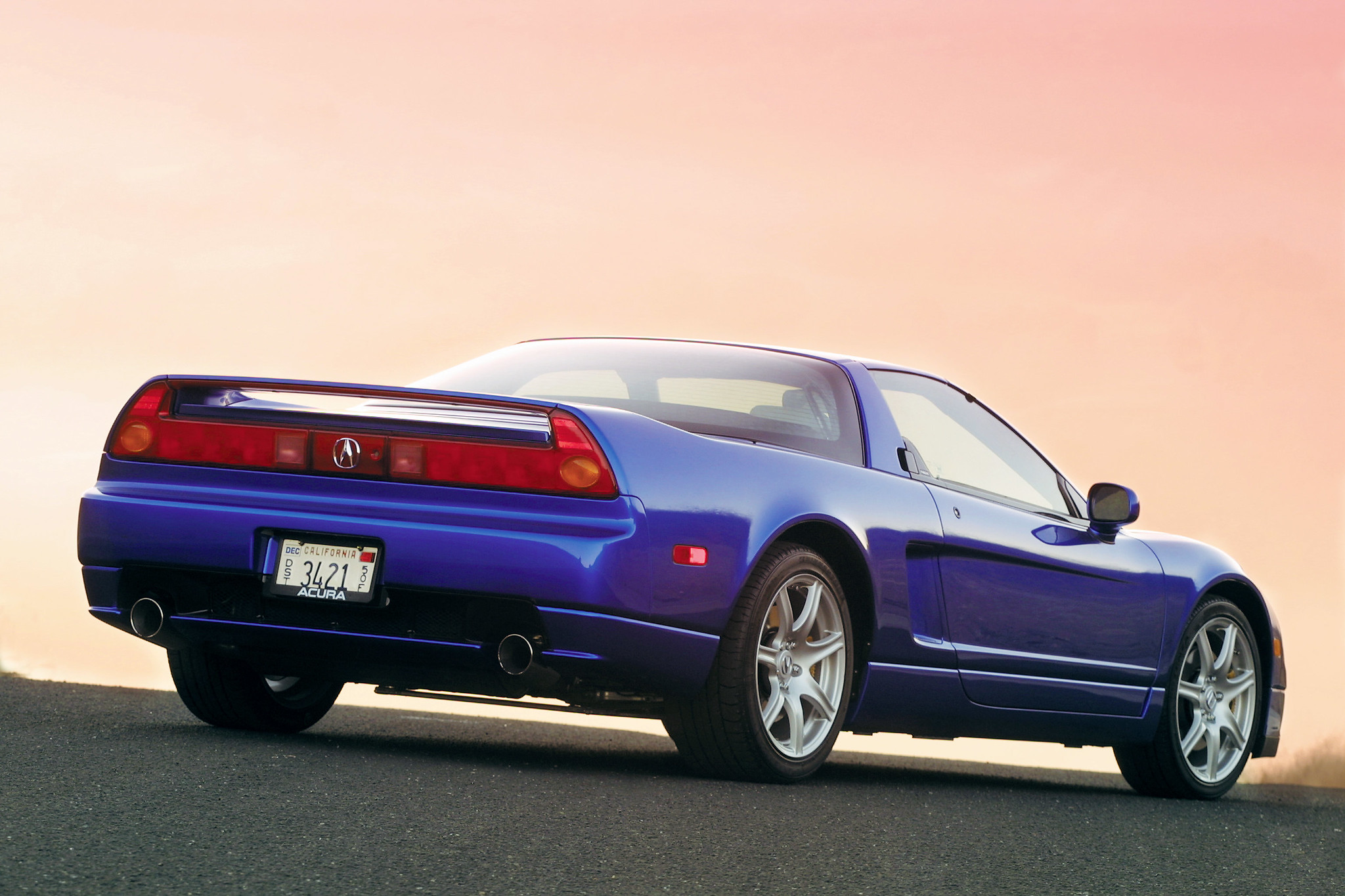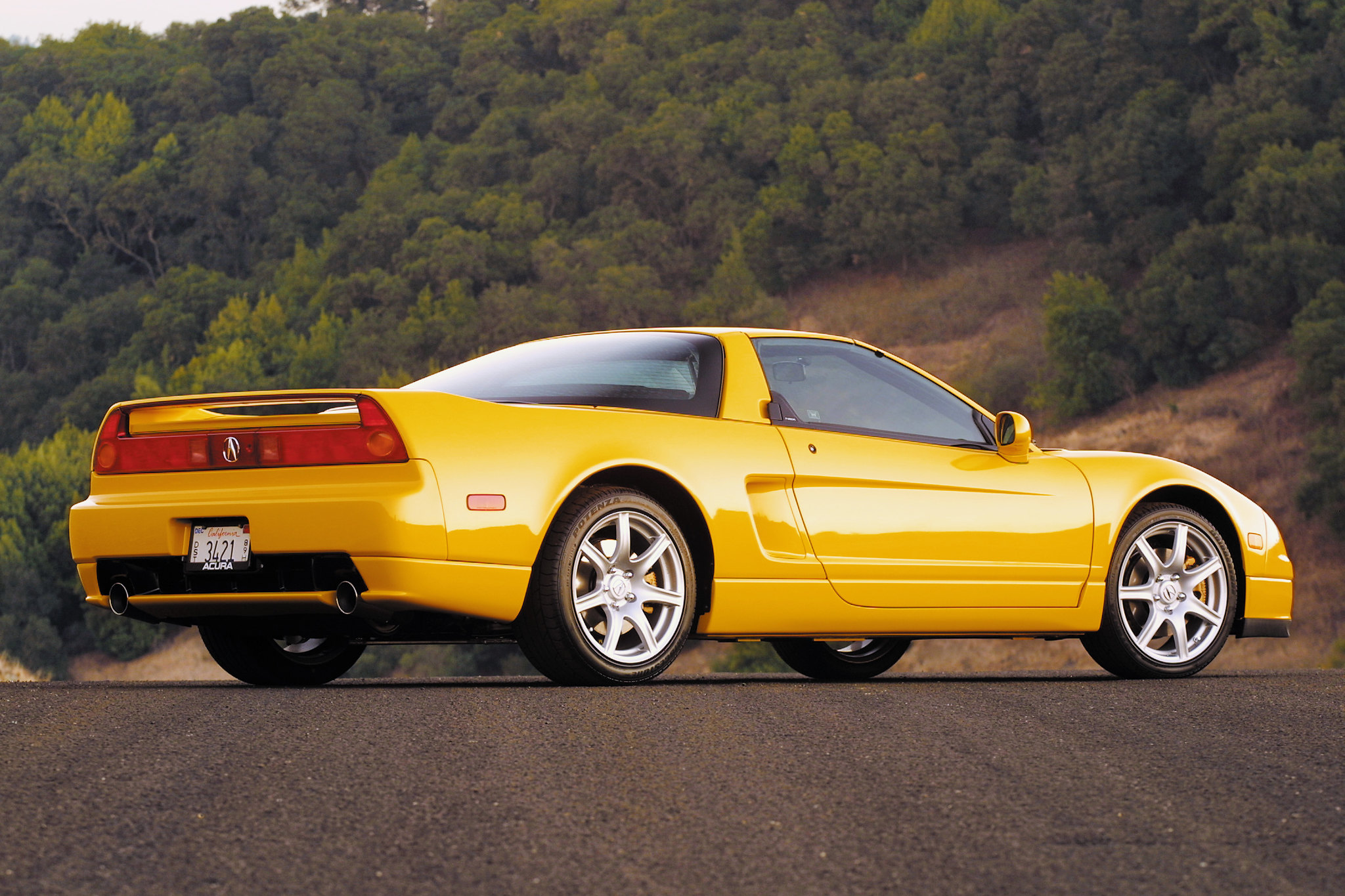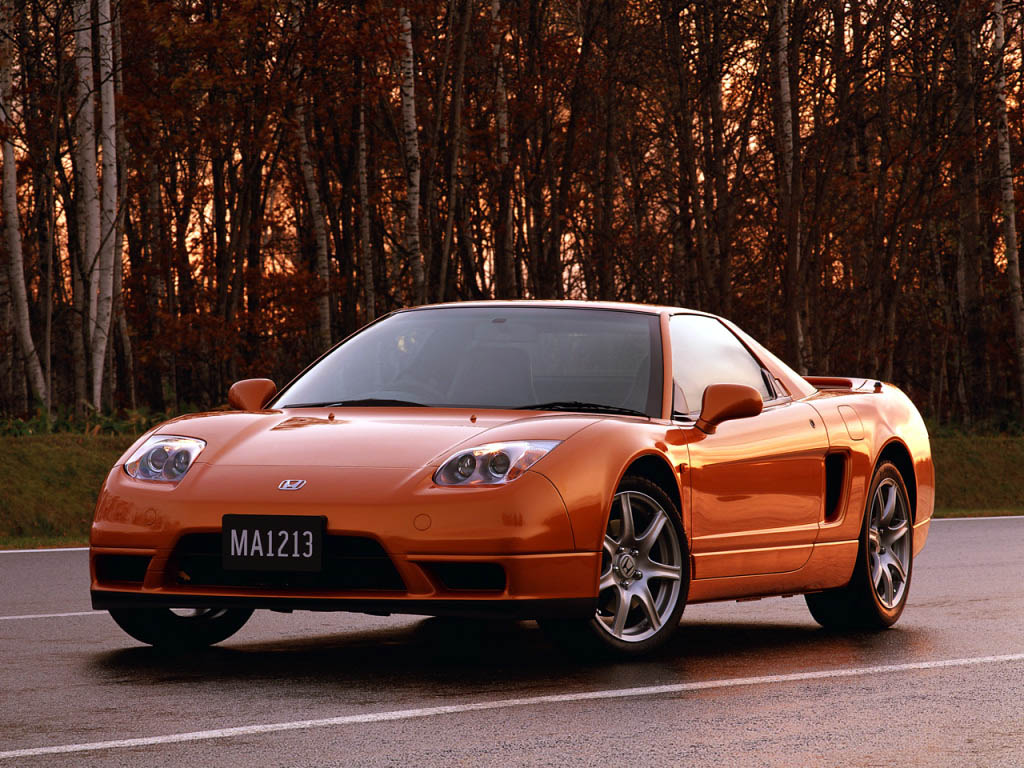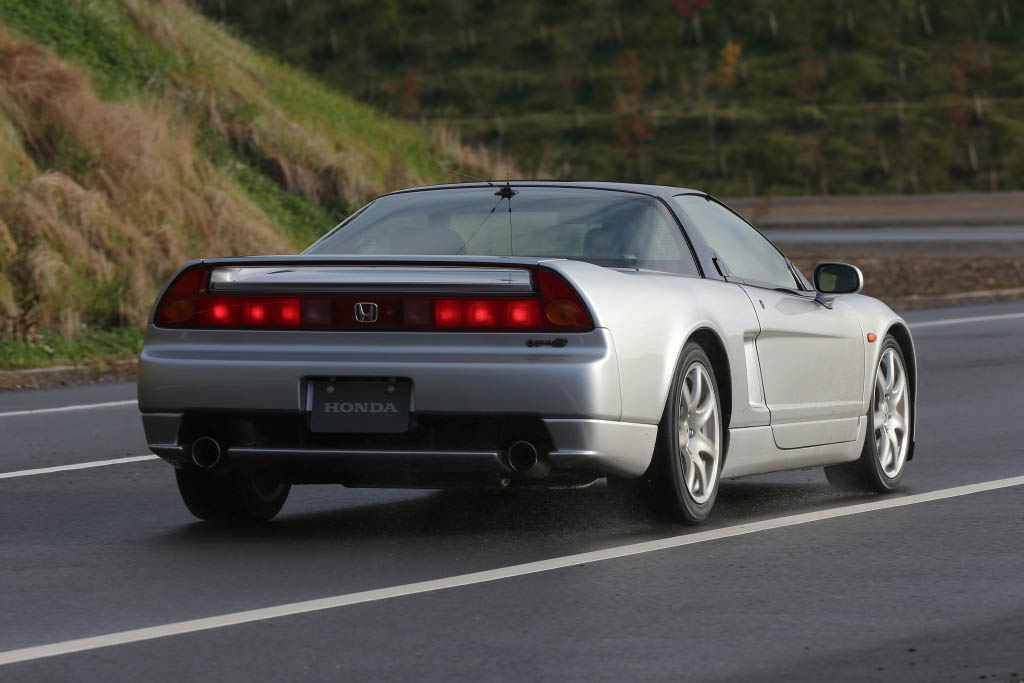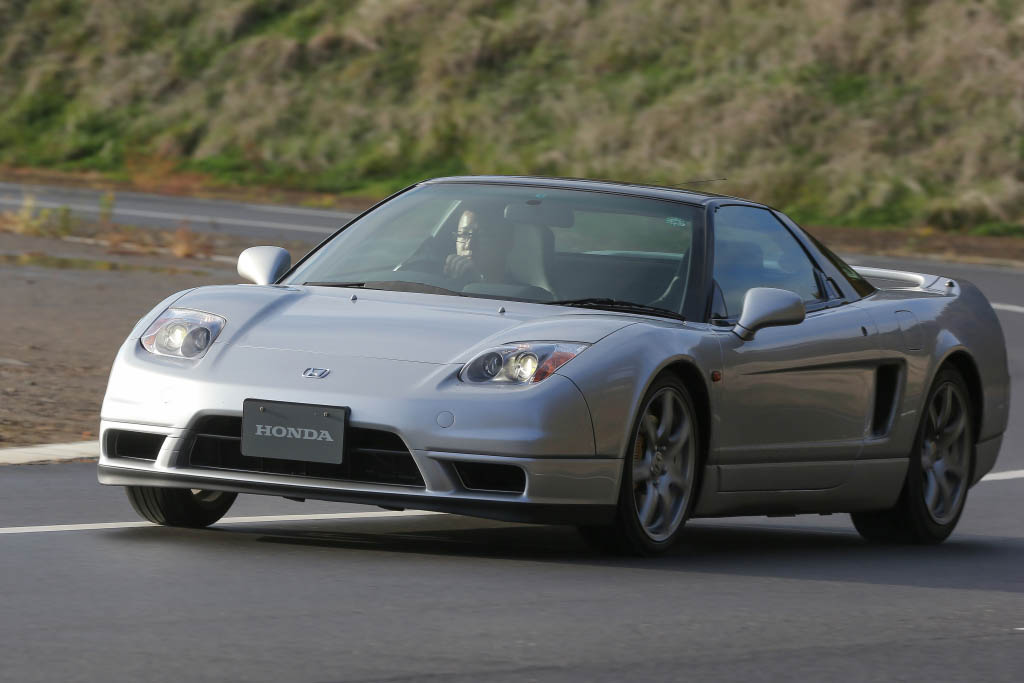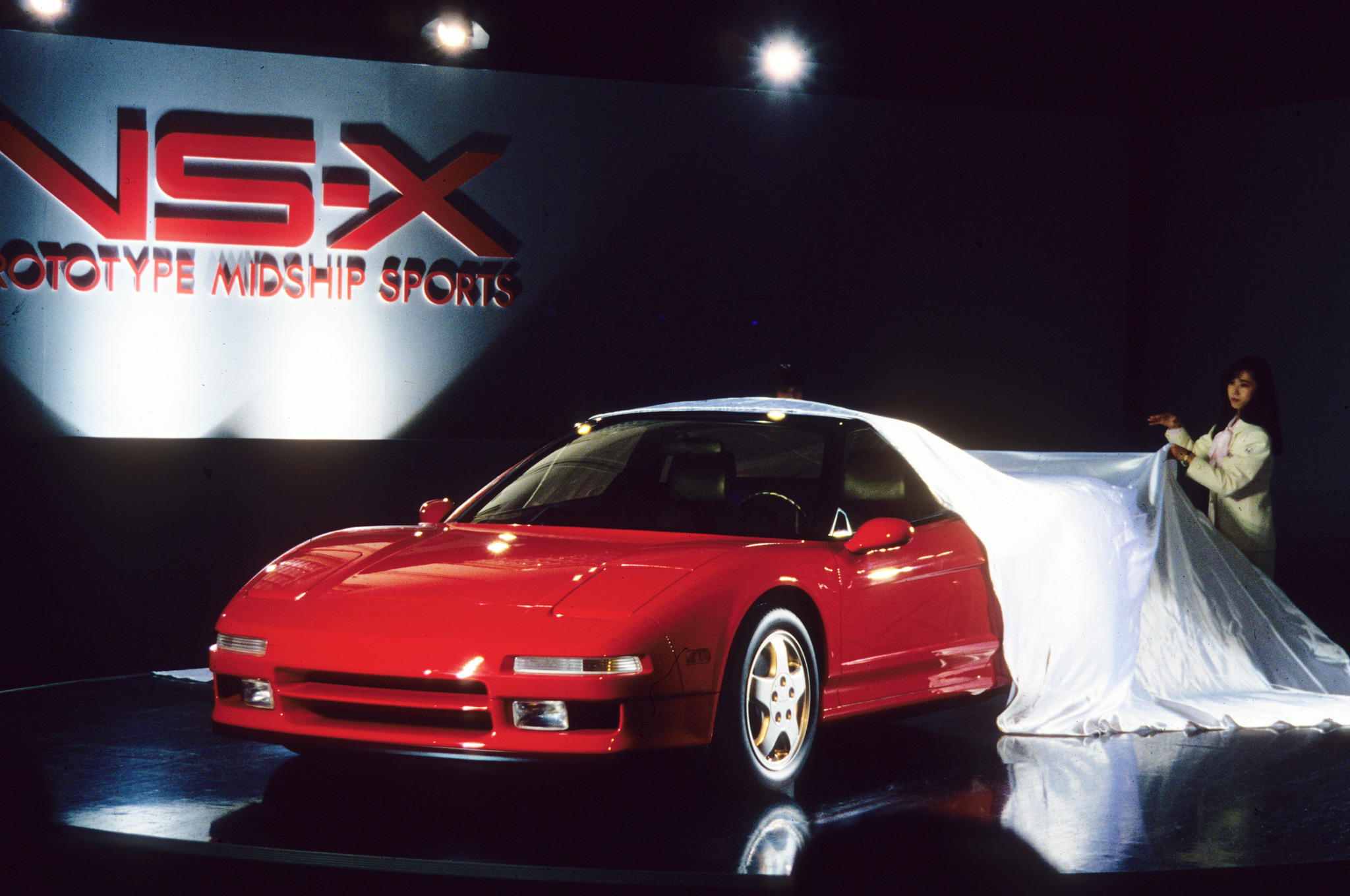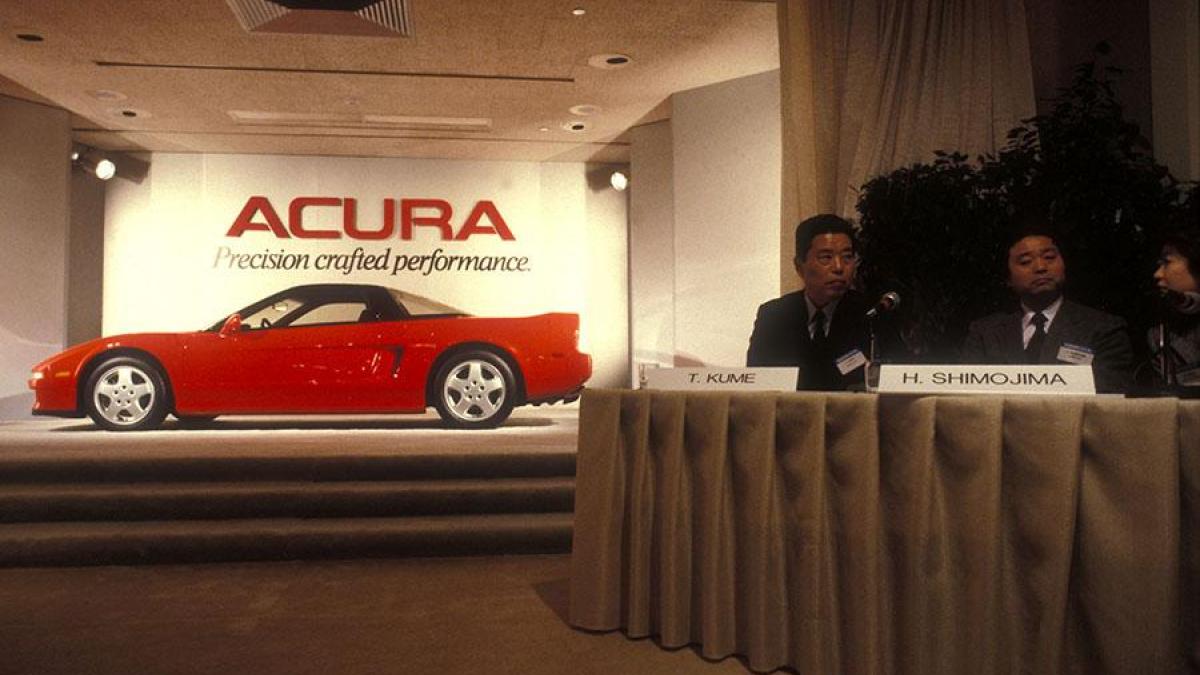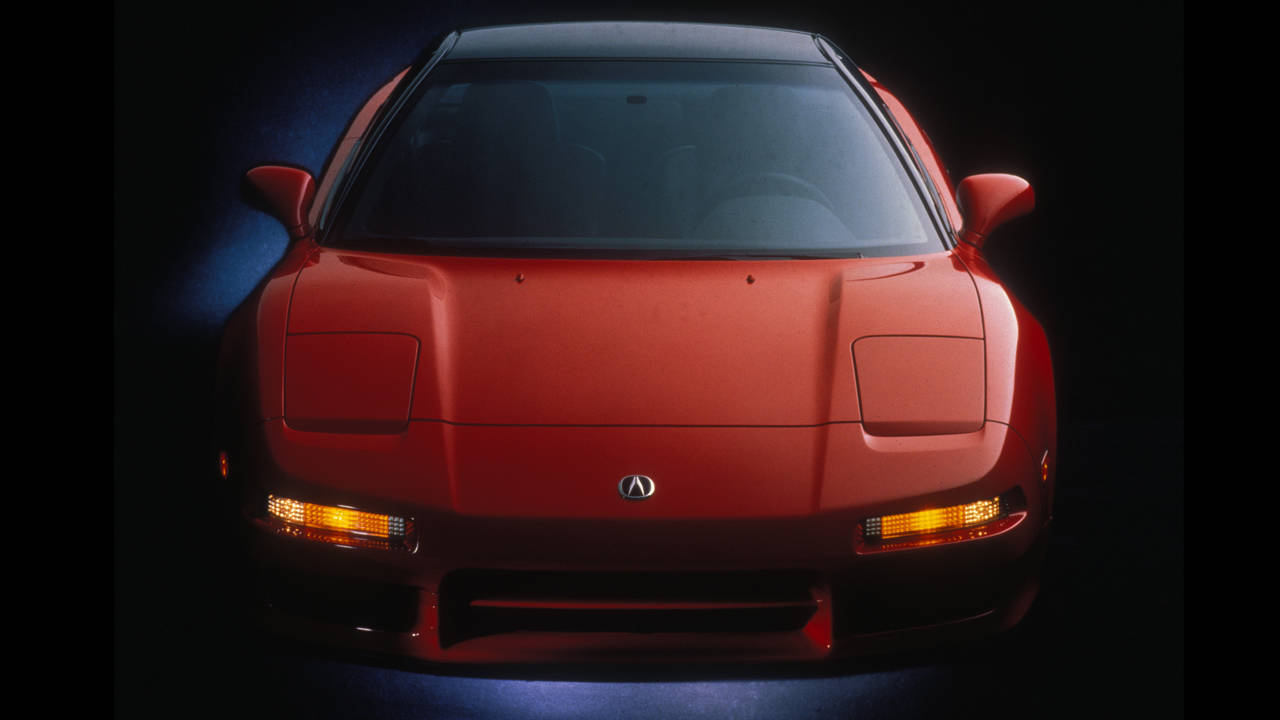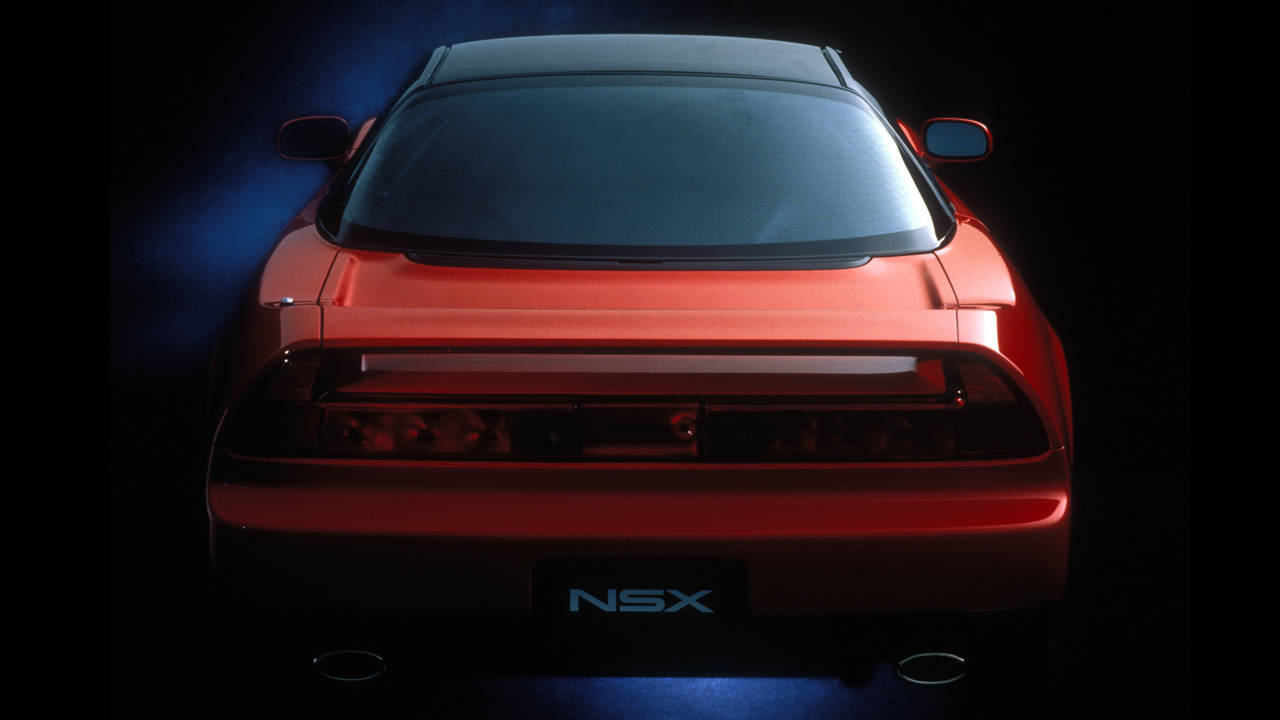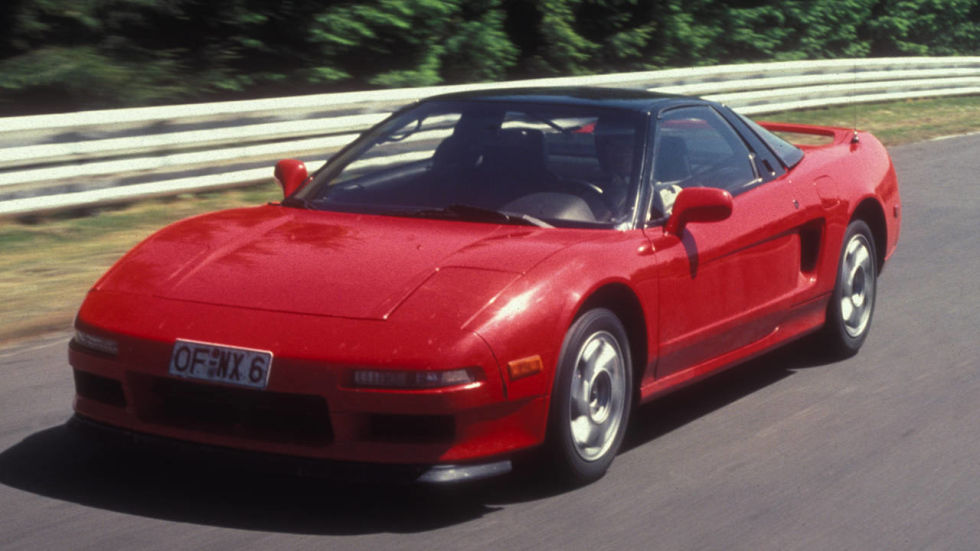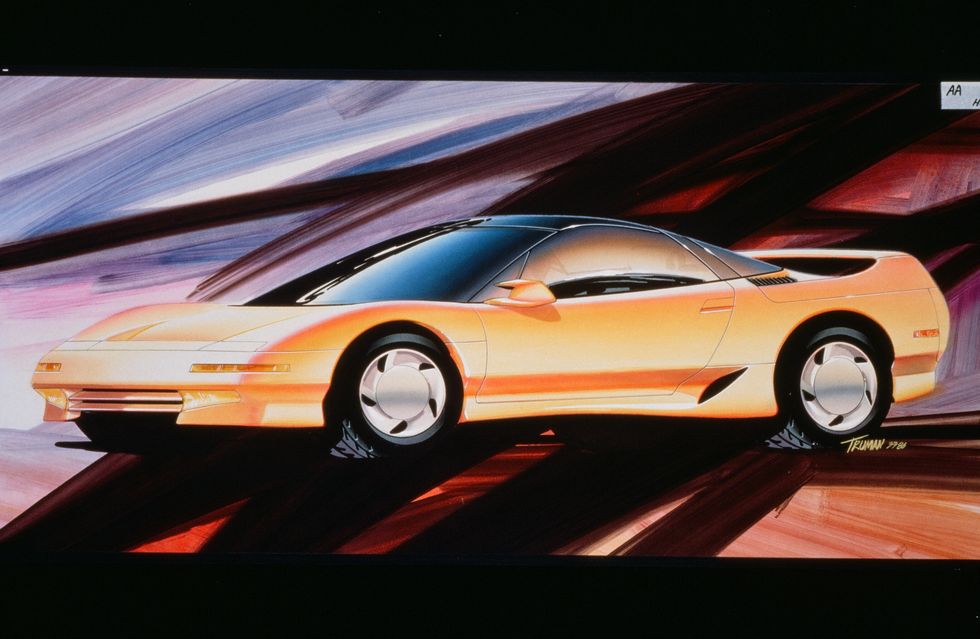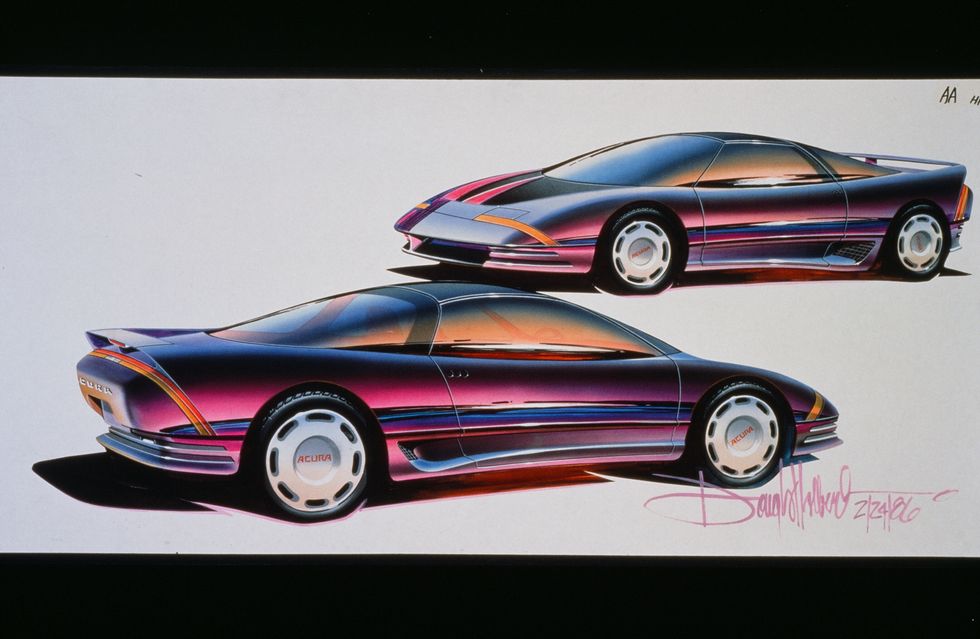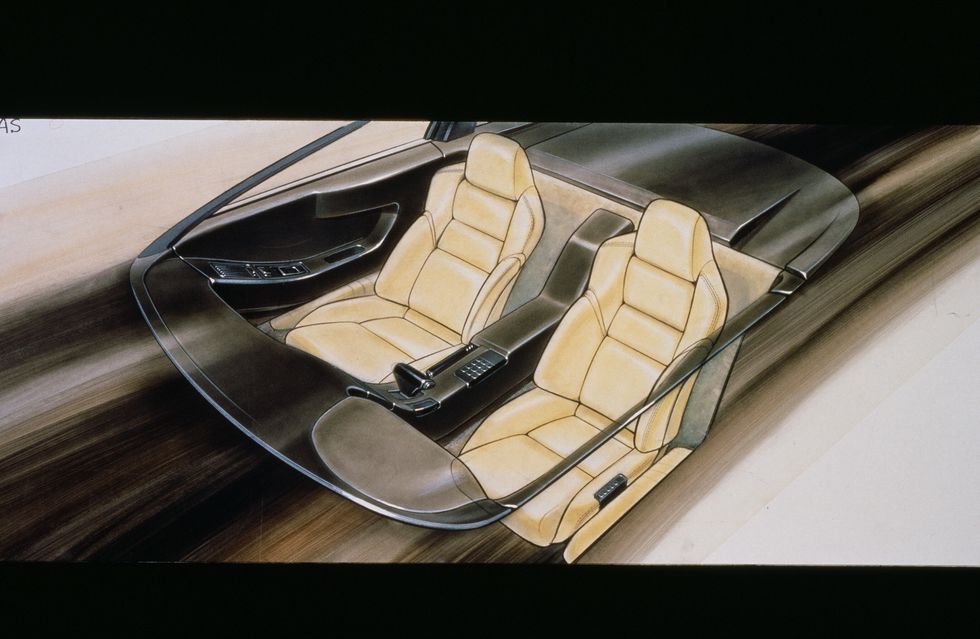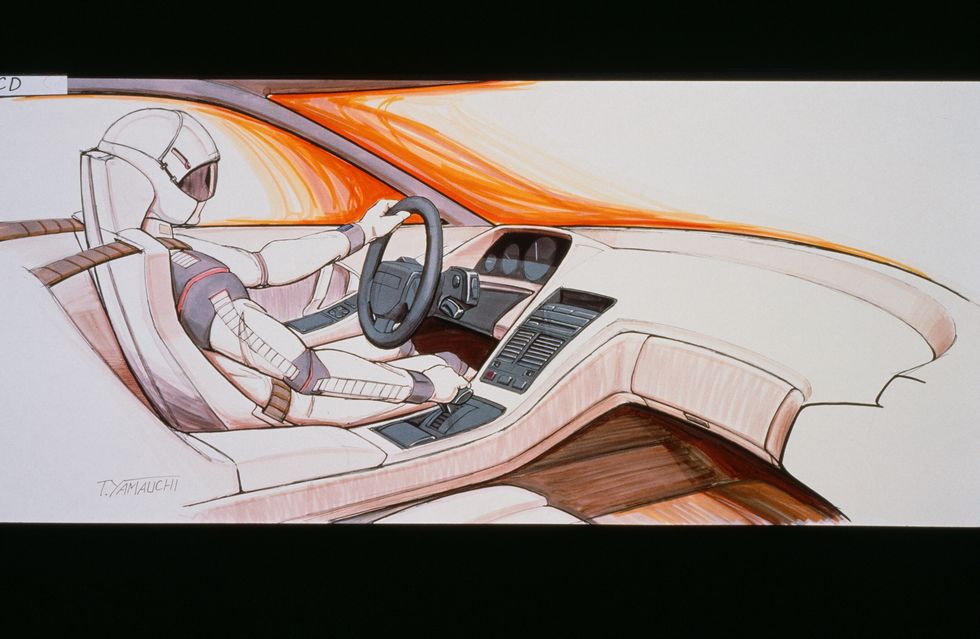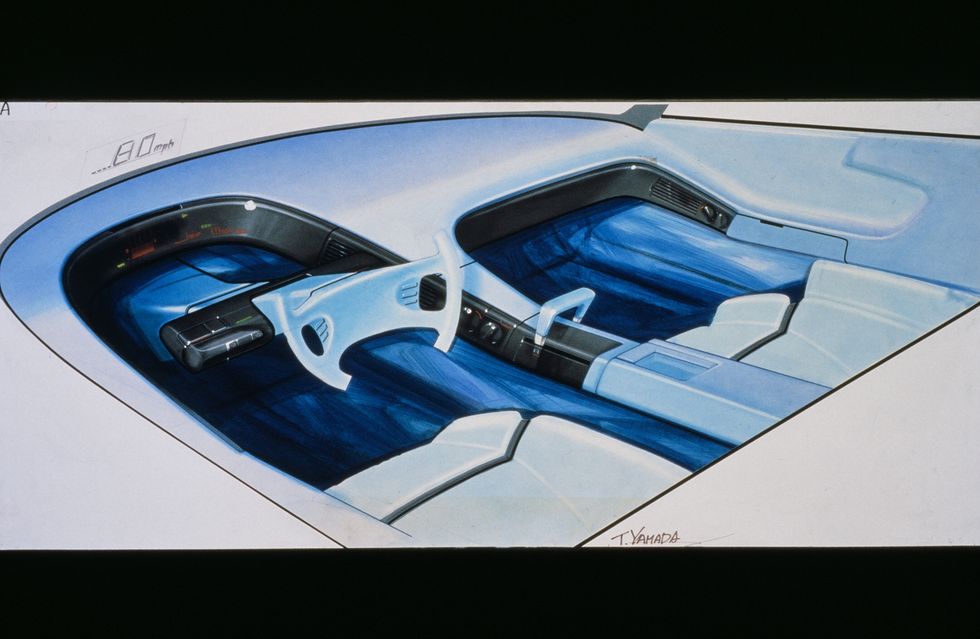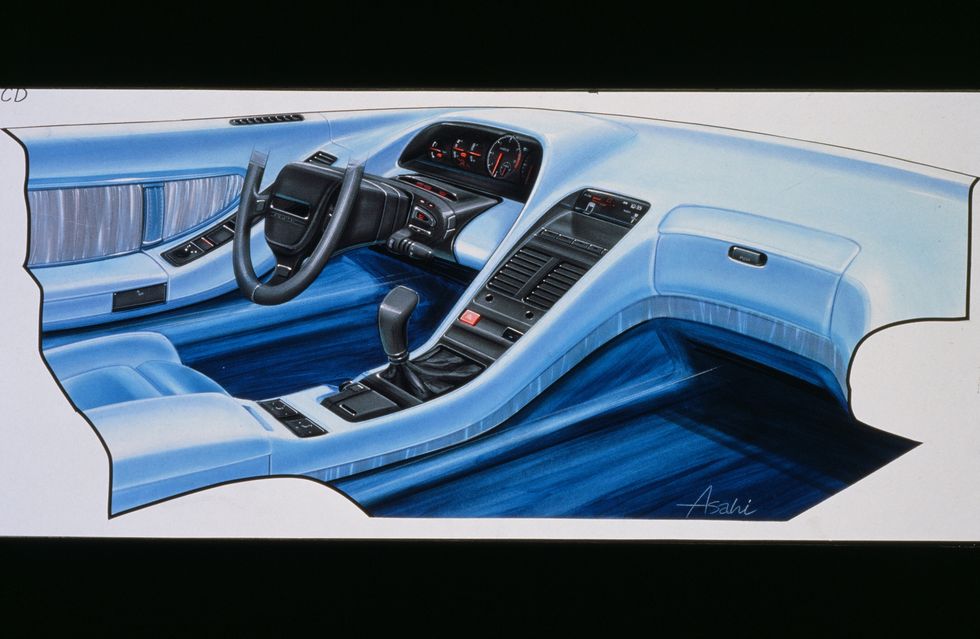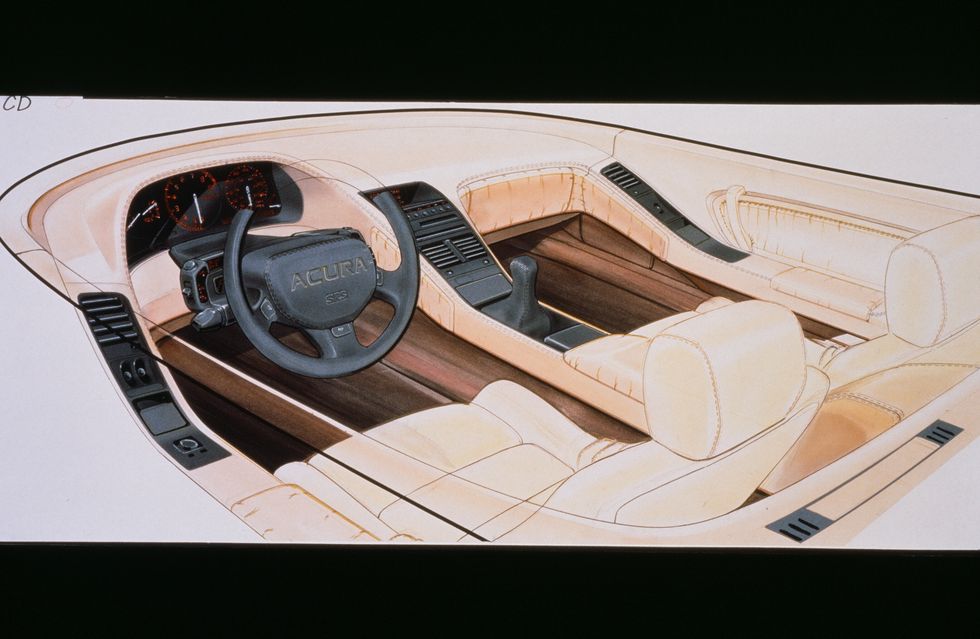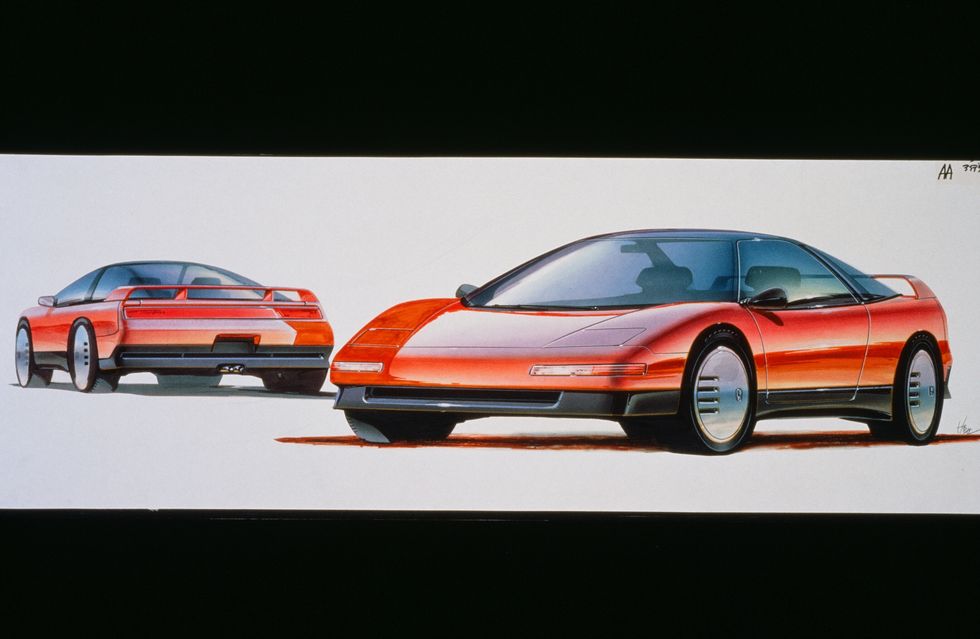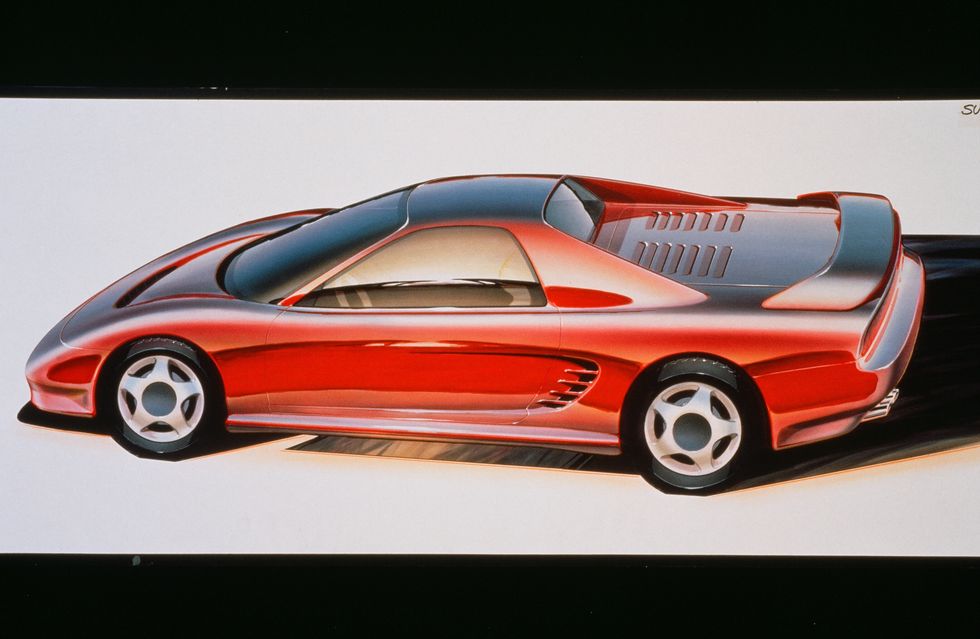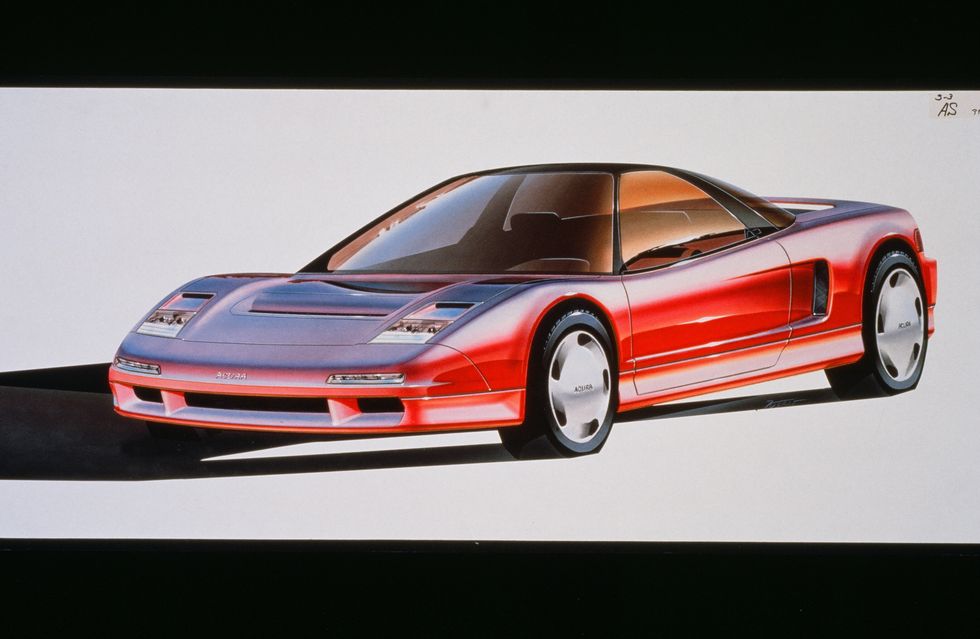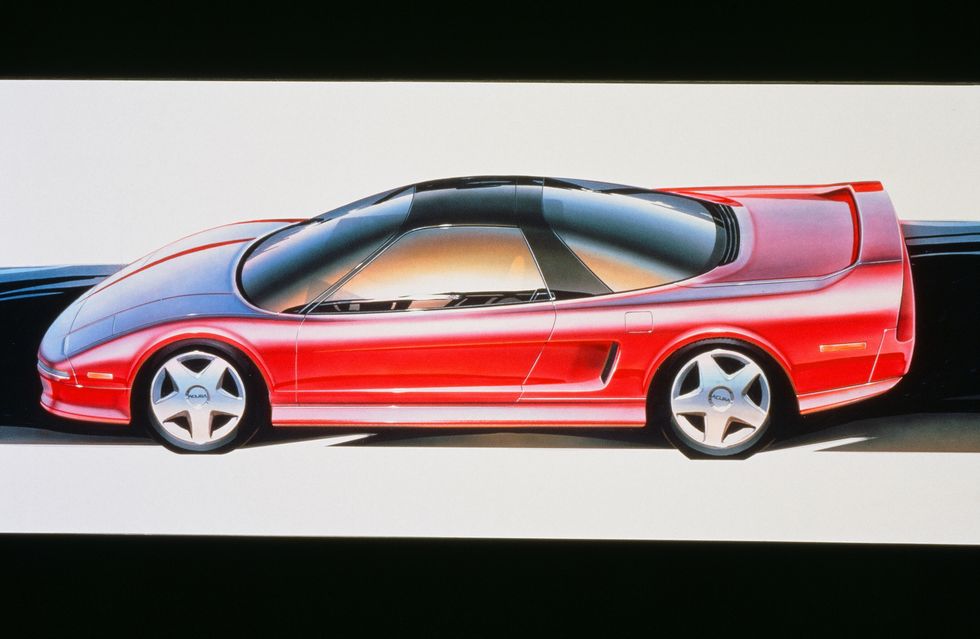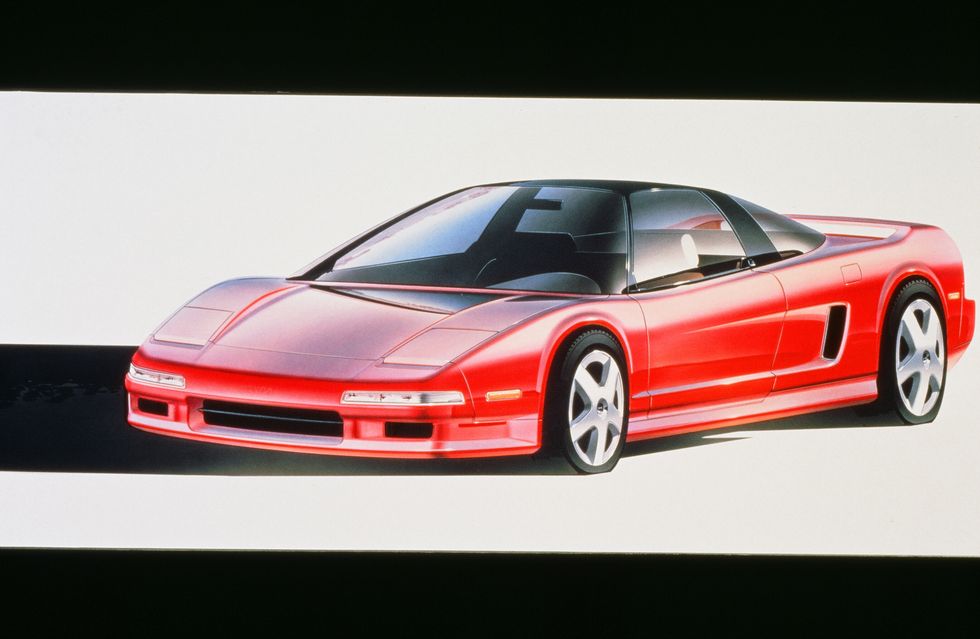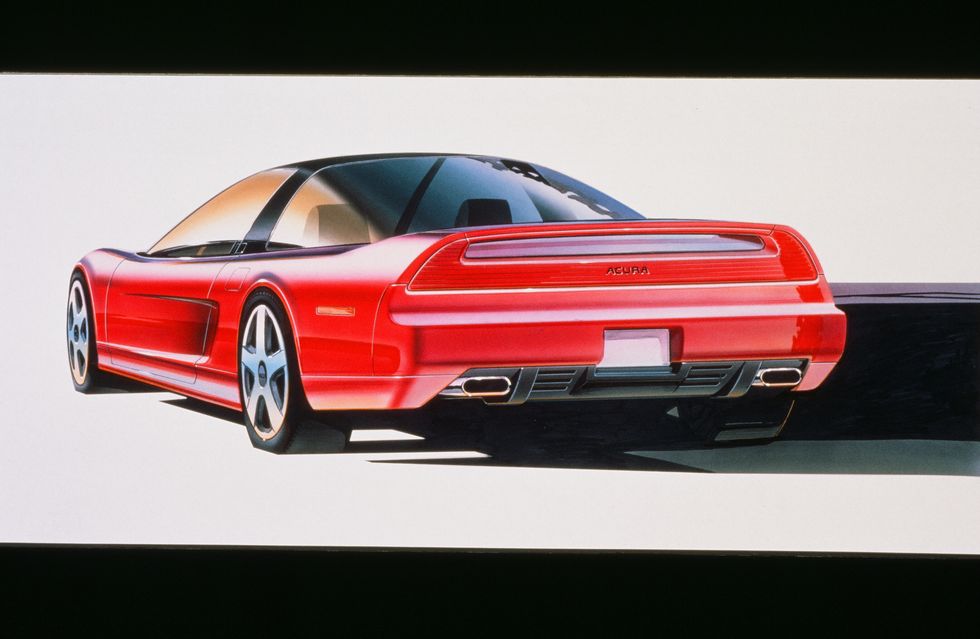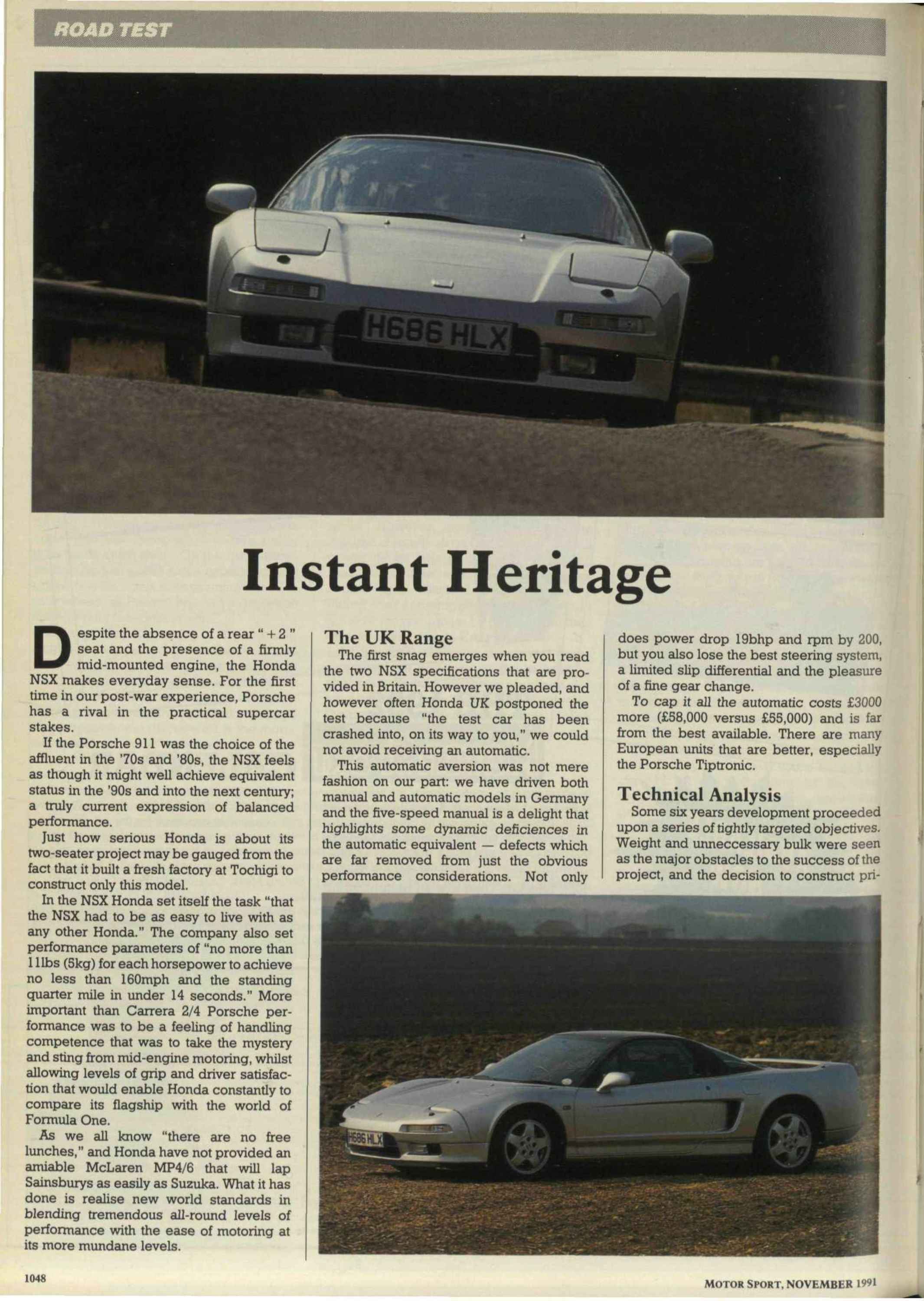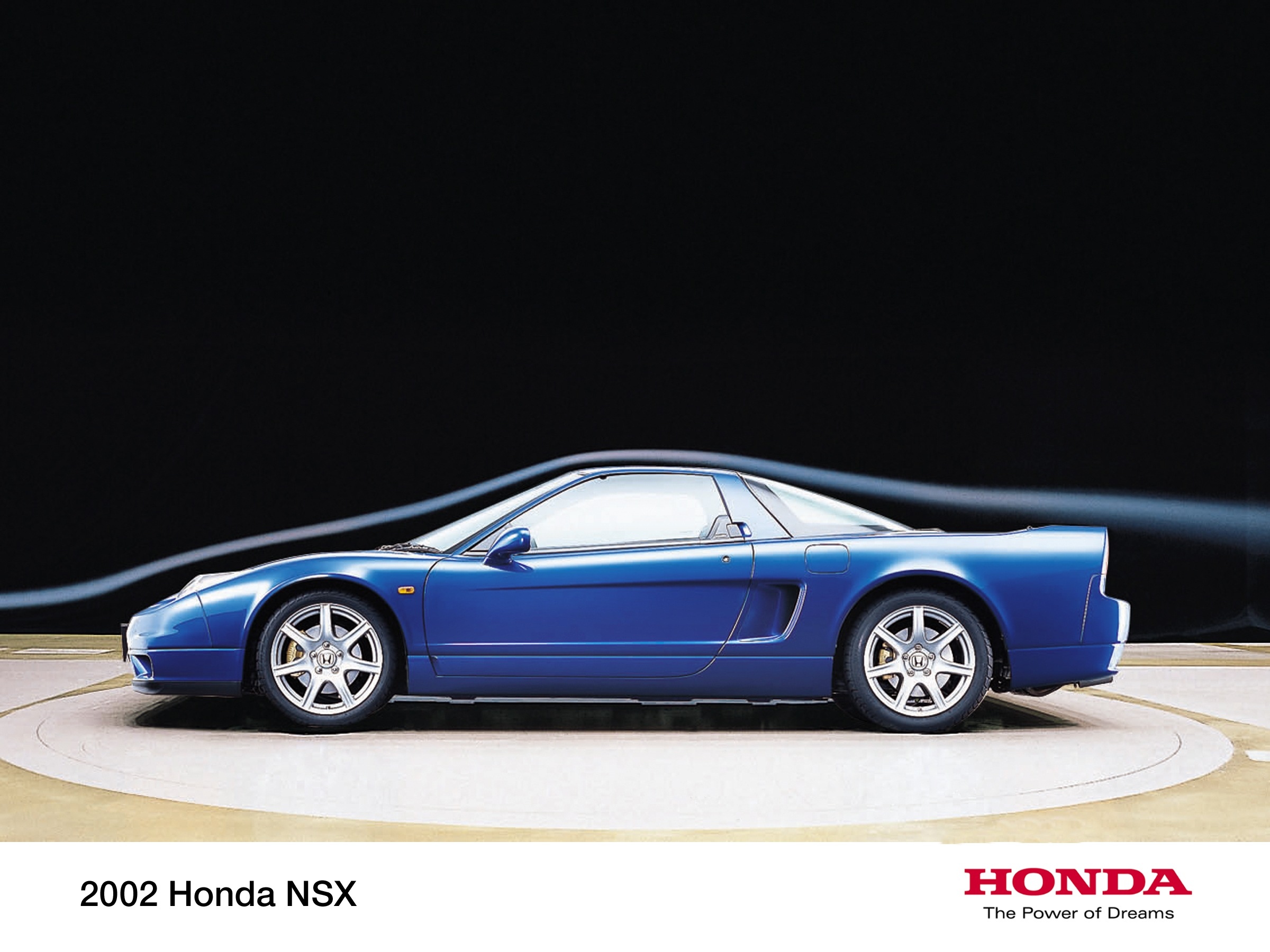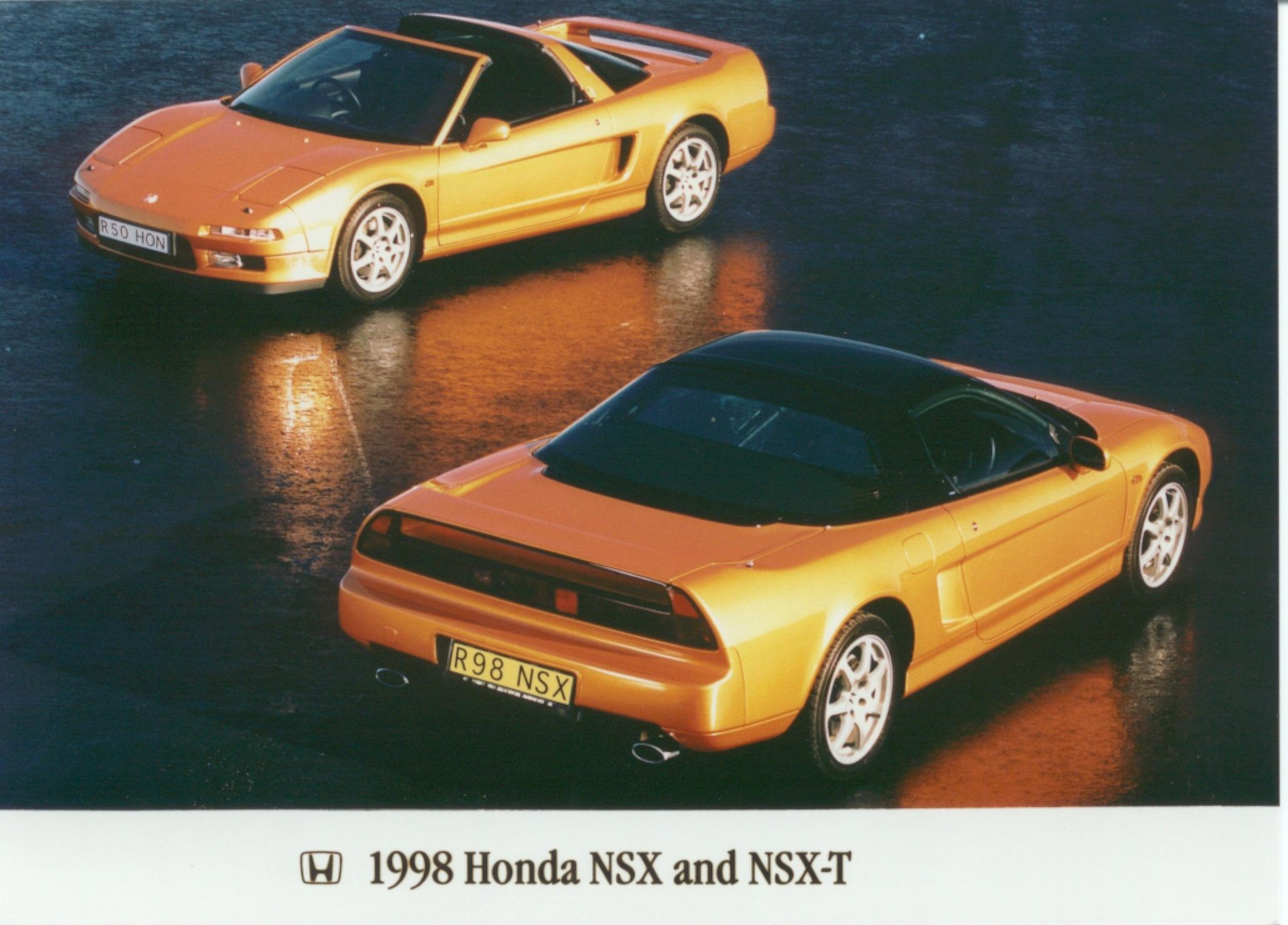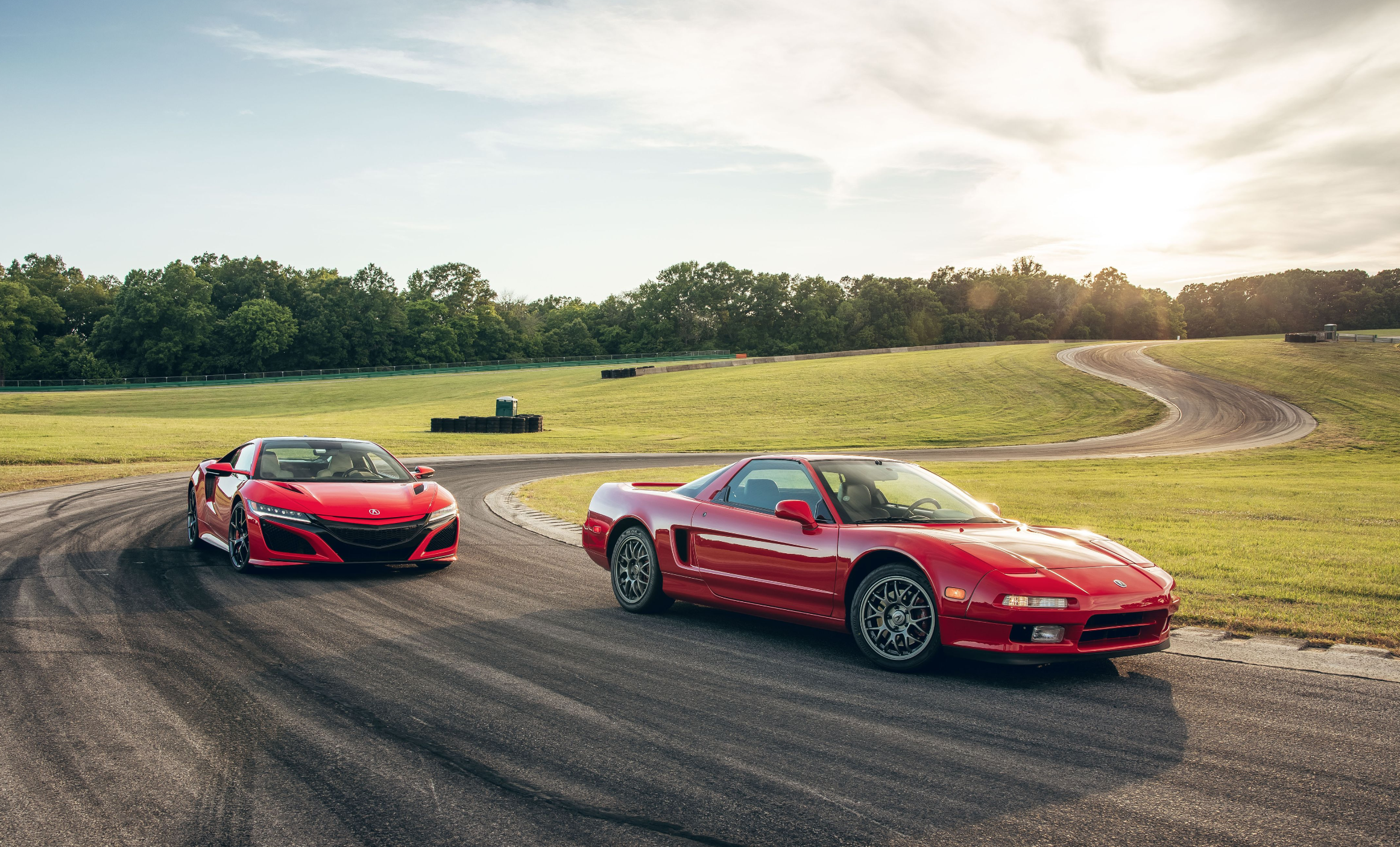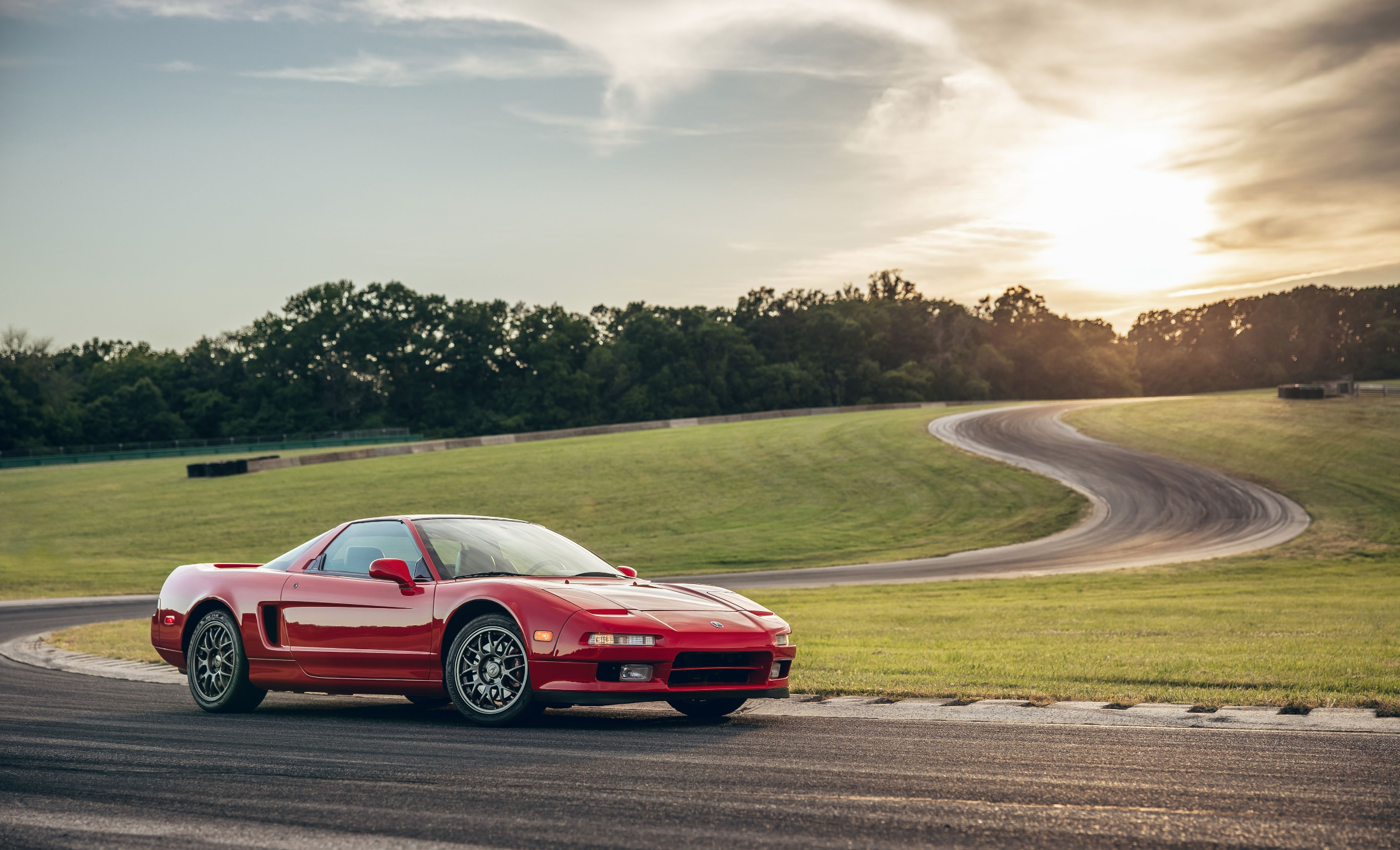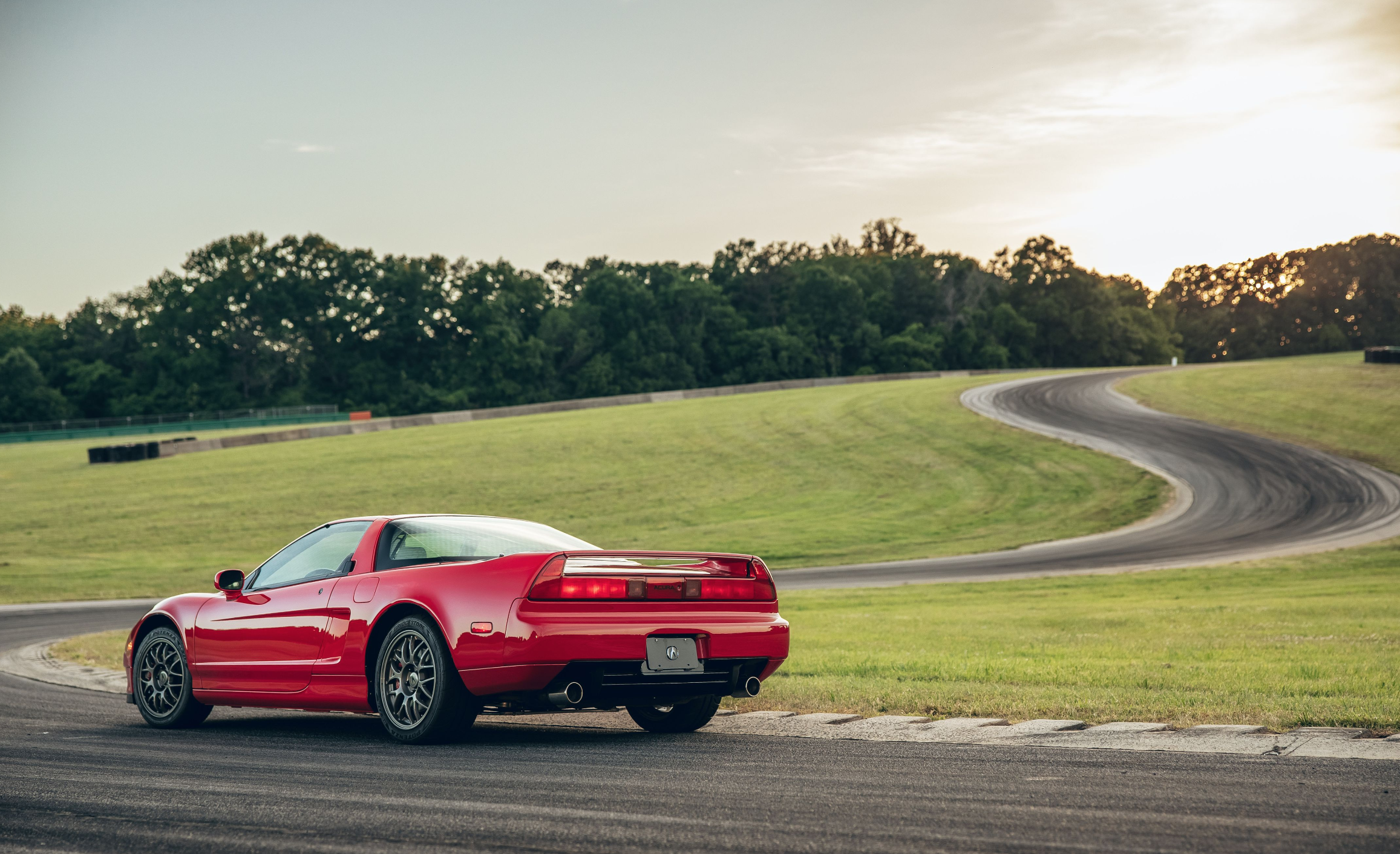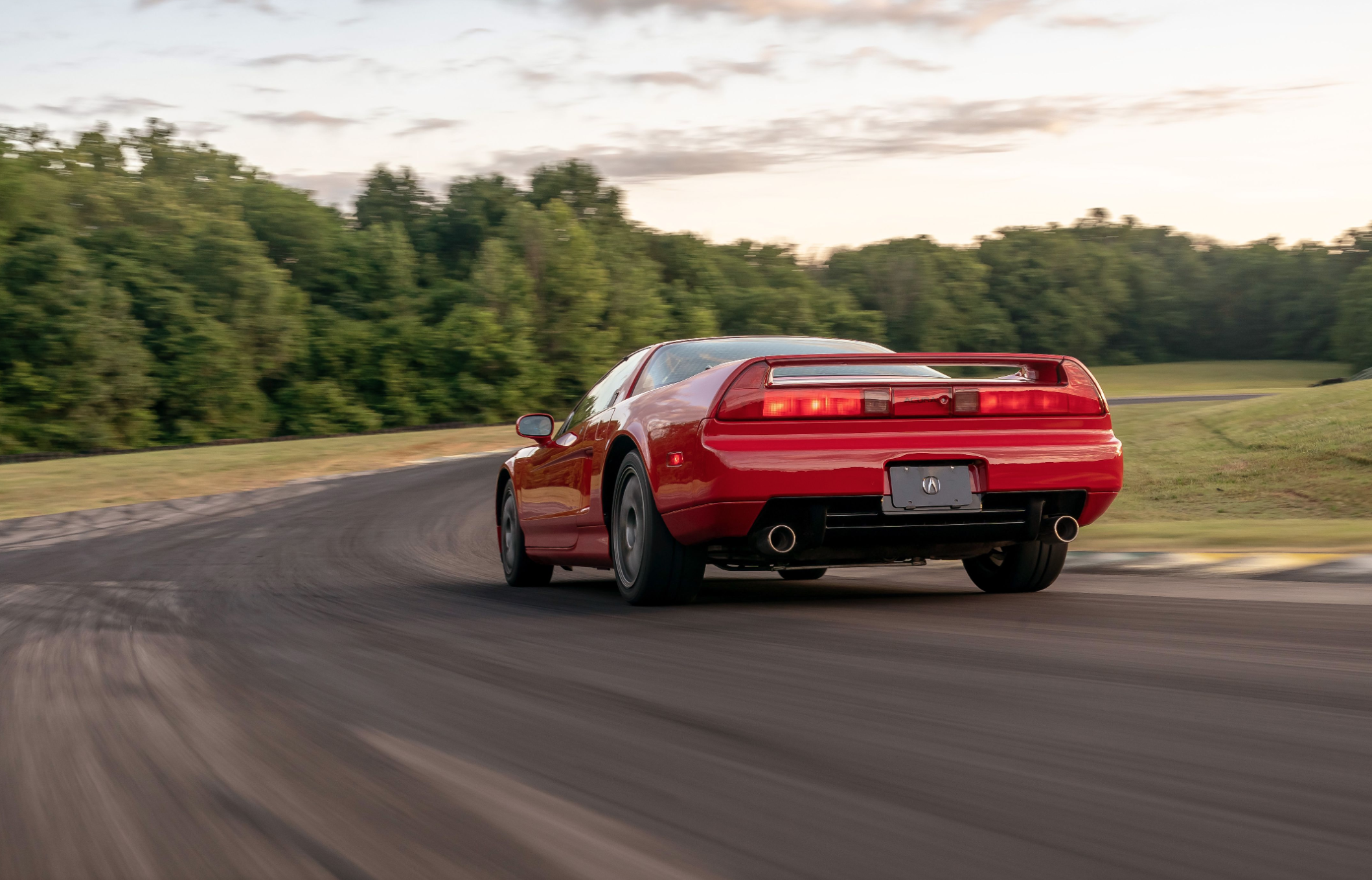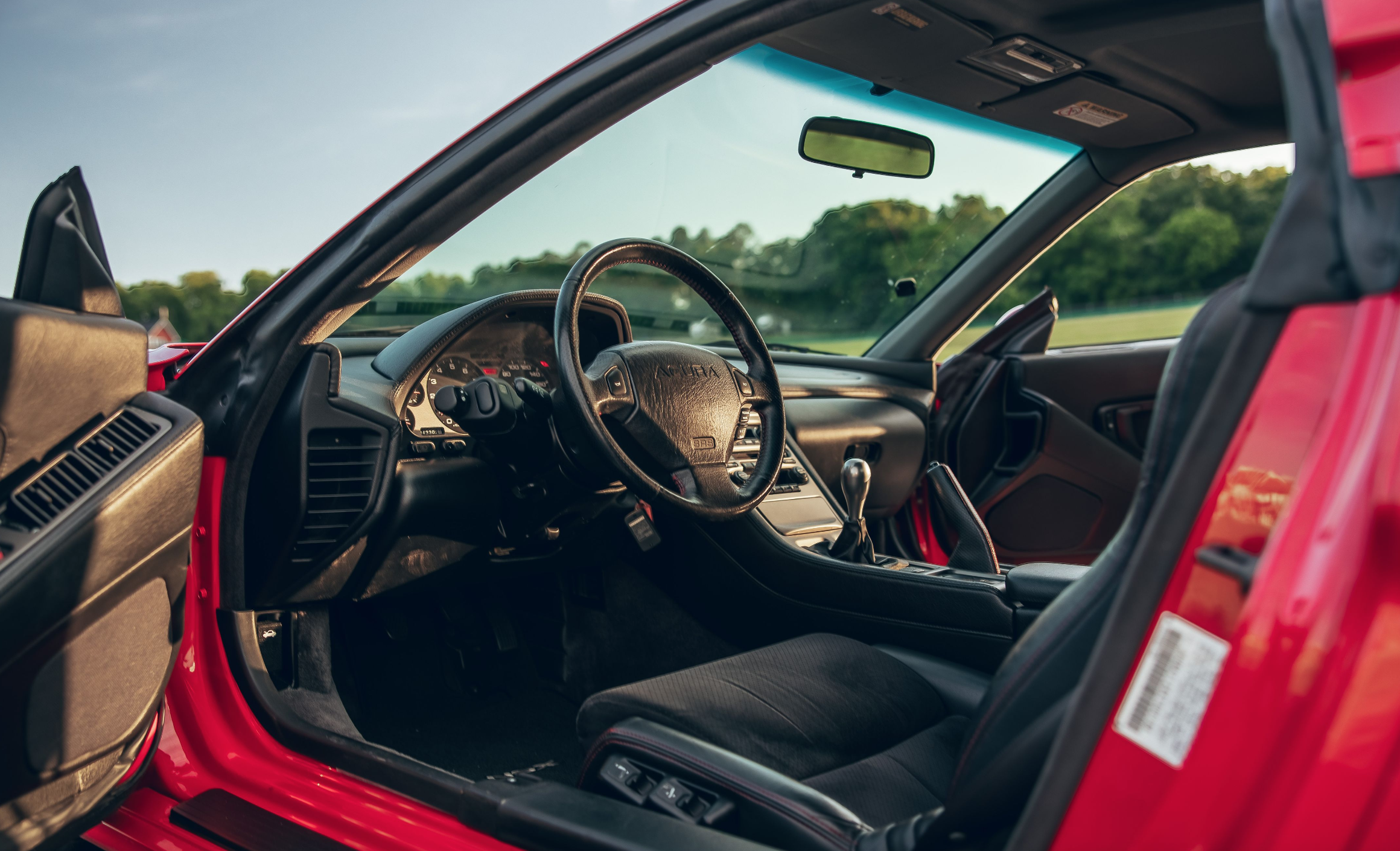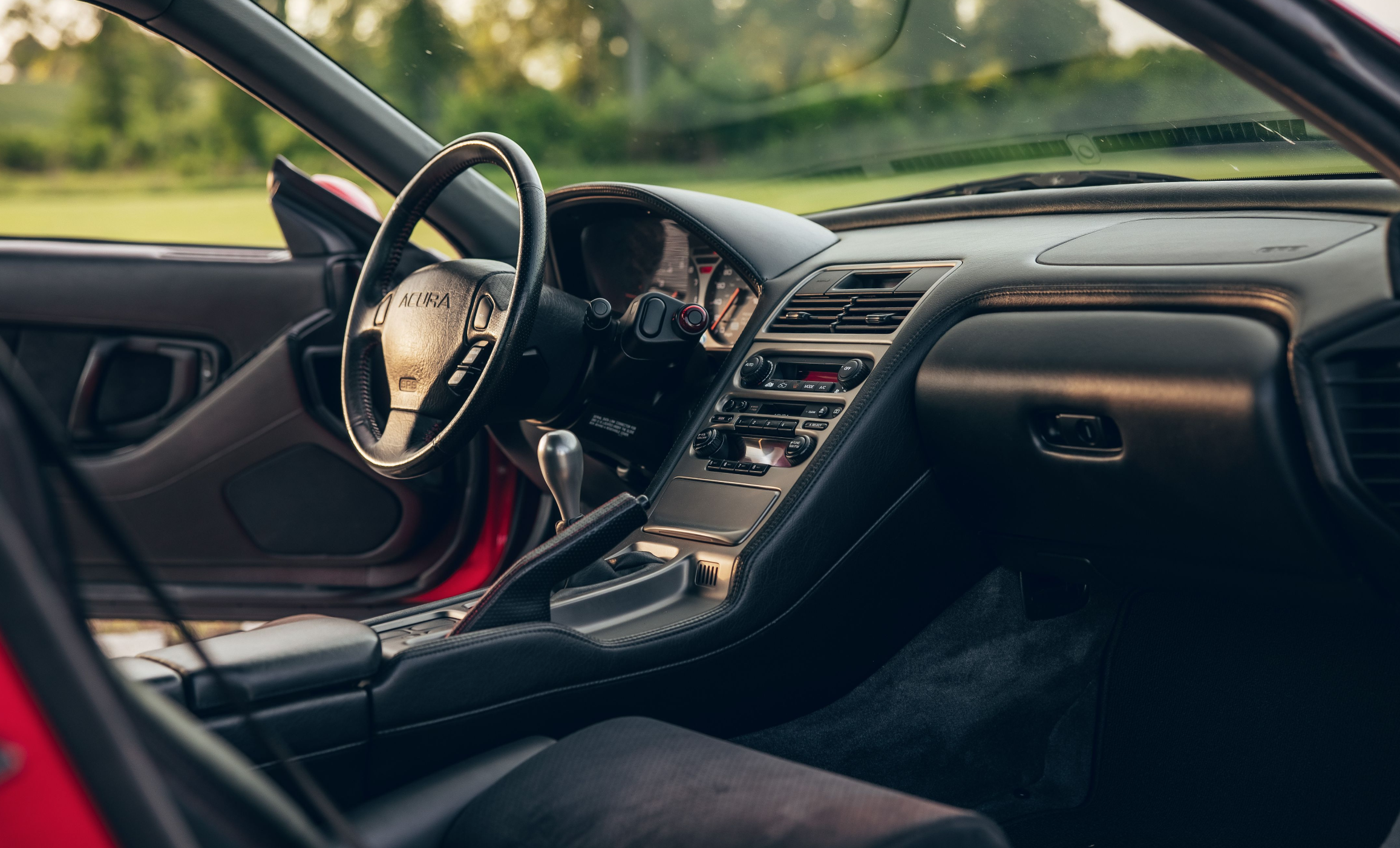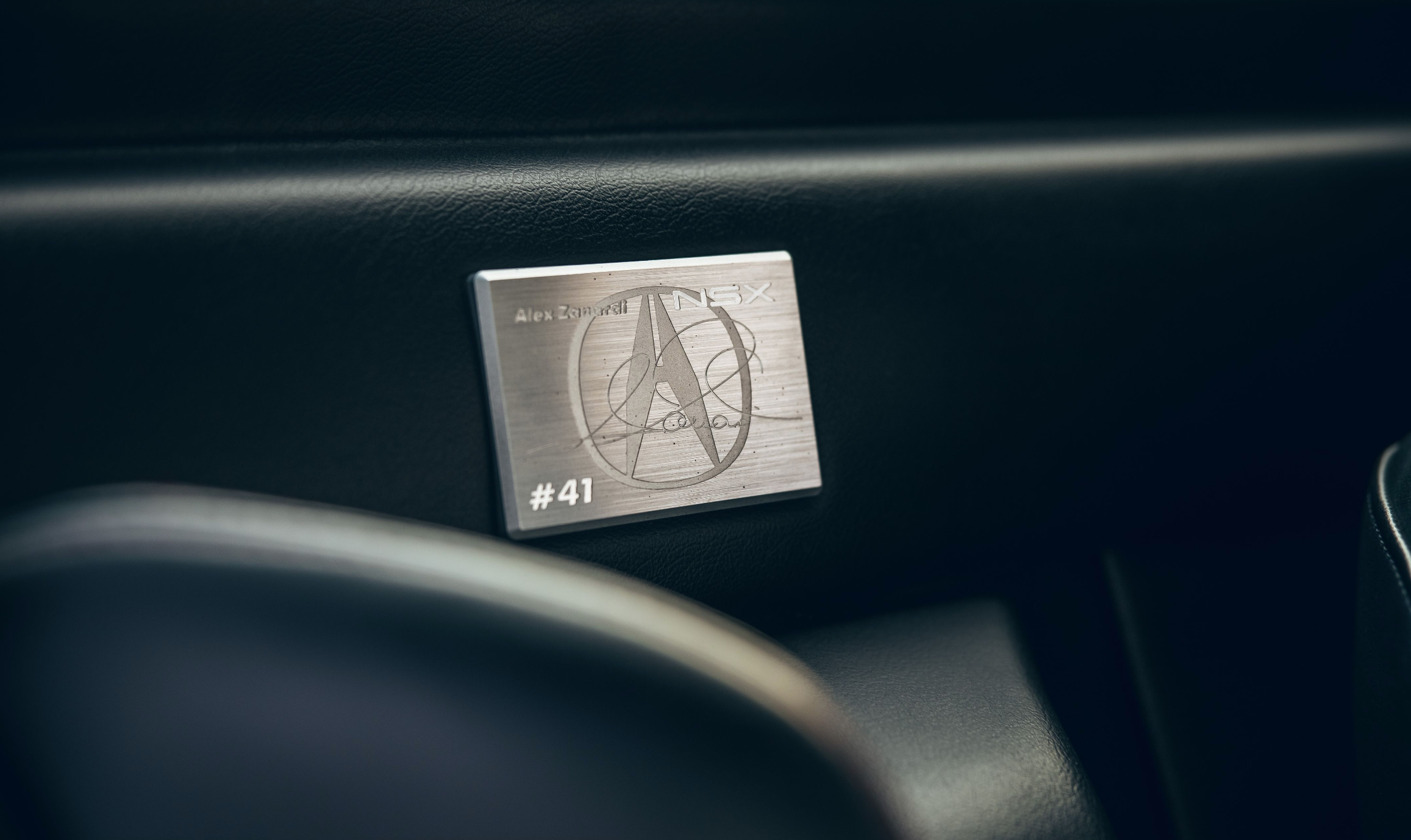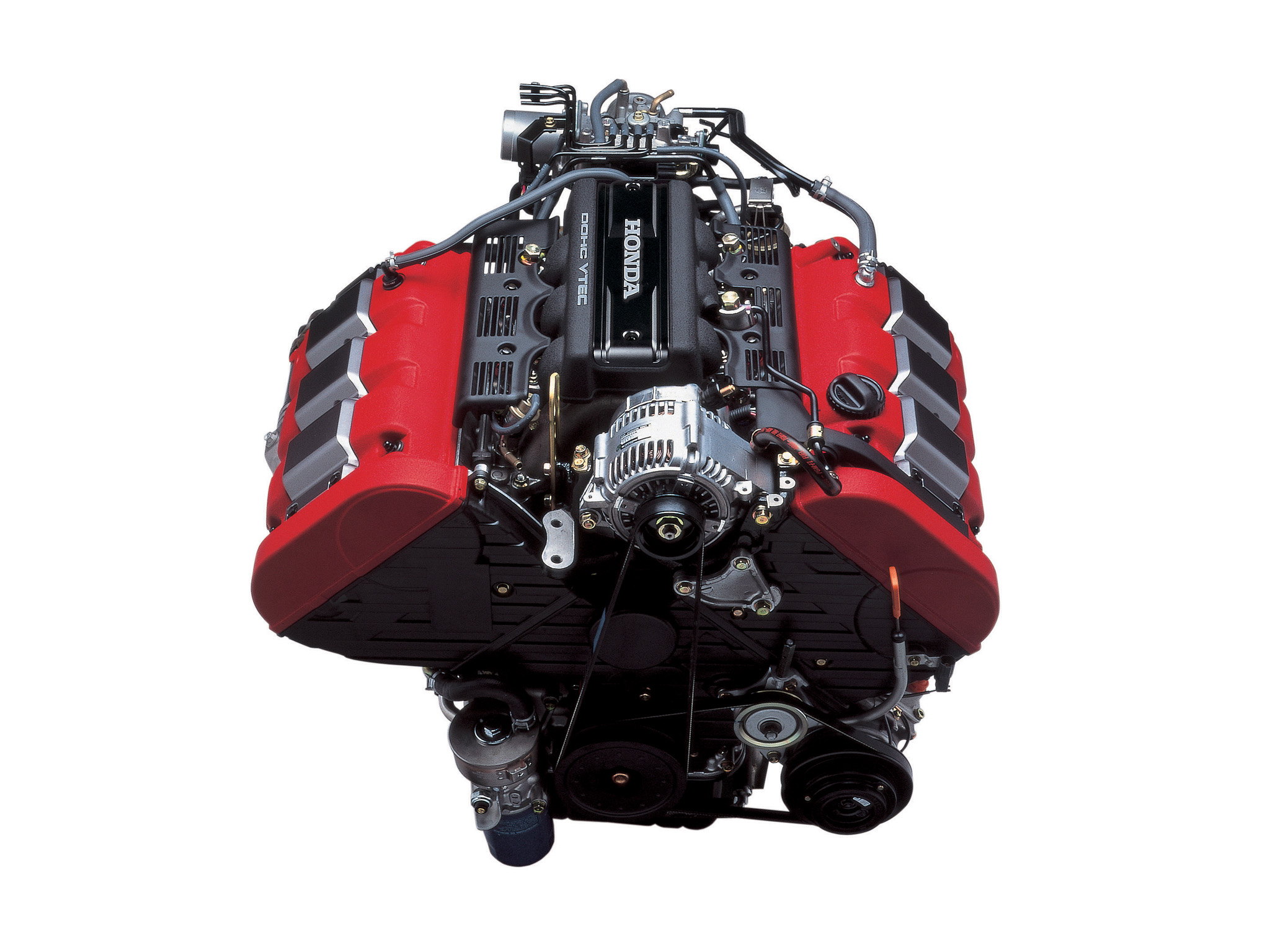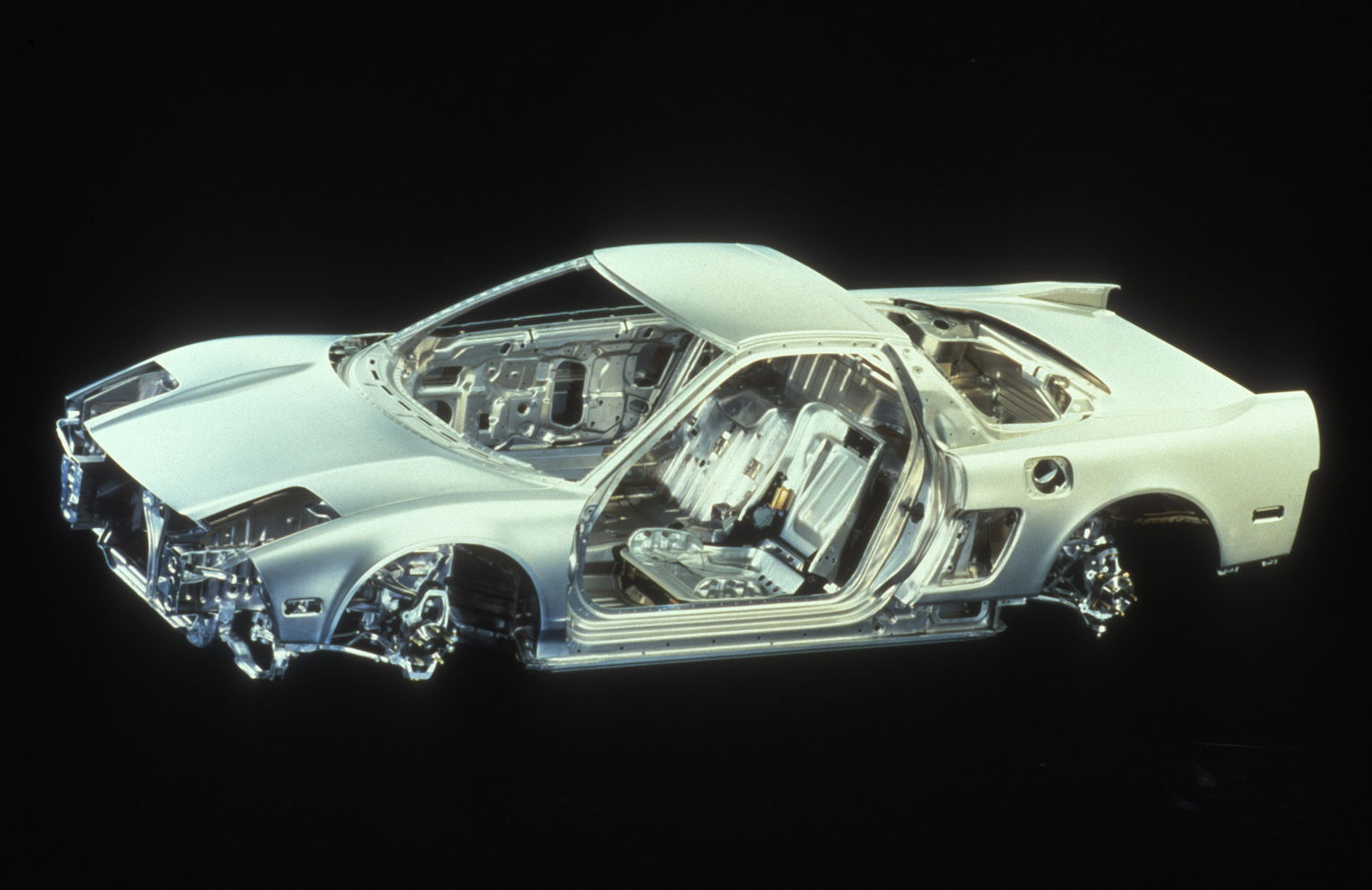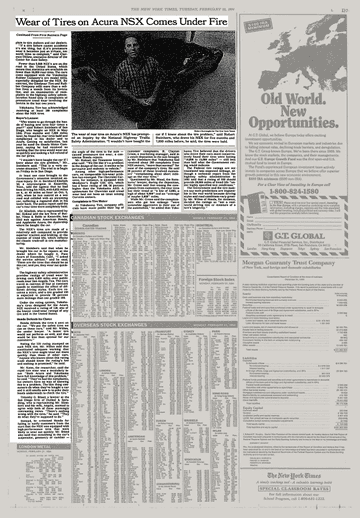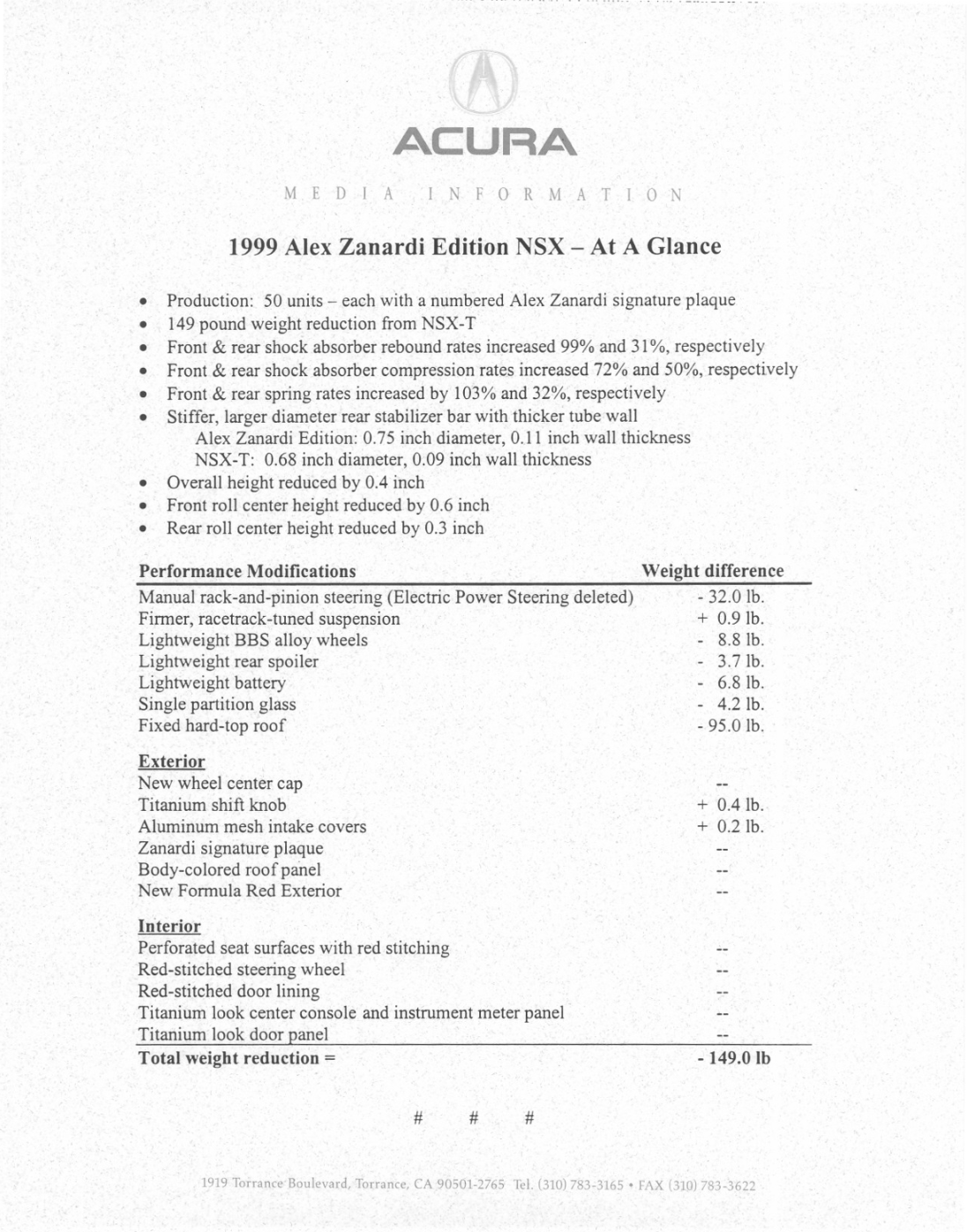<section class="article-text" style="box-sizing: border-box; color: rgb(0, 0, 0); font-family: "PT Serif", "Helvetica Neue", Helvetica, Arial, sans-serif; font-size: 16px;">November 1991
Road Test – Honda NSX
<article style="box-sizing: border-box;">Instant Heritage
Despite the absence of a rear "+ 2" seat and the presence of a firmly mid-mounted engine, the Honda NSX makes everyday sense. For the first time in our post-war experience, Porsche has a rival in the practical supercar stakes.
If the Porsche 911 was the choice of the affluent in the '70s and '80s, the NSX feels as though it might well achieve equivalent status in the '90s and into the next century; a truly current expression of balanced performance.
Just how serious Honda is about its two-seater project may be gauged from the fact that it built a fresh factory at Tochigi to construct only this model.
In the NSX Honda set itself the task "that the NSX had to be as easy to live with as any other Honda." The company also set performance parameters of "no more than 11 lbs (5kg) for each horsepower to achieve no less than 160mph and the standing quarter mile in under 14 seconds." More important than Carrera 2/4 Porsche performance was to be a feeling of handling competence that was to take the mystery and sting from mid-engine motoring, whilst allowing levels of grip and driver satisfaction that would enable Honda constantly to compare its flagship with the world of Formula One.
As we all know "there are no free lunches," and Honda have not provided an amiable McLaren MP4/6 that will lap Sainsburys as easily as Suzuka. What it has done is realise new world standards in blending tremendous all-round levels of performance with the ease of motoring at its more mundane levels.
The UK Range
The first snag emerges when you read the two NSX specifications that are provided in Britain. However we pleaded, and however often Honda UK postponed the test because "the test car has been crashed into, on its way to you," we could not avoid receiving an automatic.
This automatic aversion was not mere fashion on our part: we have driven both manual and automatic models in Germany and the five-speed manual is a delight that highlights some dynamic deficiences in the automatic equivalent — defects which are far removed from just the obvious performance considerations. Not only does power drop 19bhp and rpm by 200, but you also lose the best steering system, a limited slip differential and the pleasure of a fine gear change.
To cap it all the automatic costs £3000 more (£58,000 versus £55,000) and is far from the best available. There are many European units that are better, especially the Porsche Tiptronic.
Technical Analysis
Some six years development proceeded upon a series of tightly targeted objectives. Weight and unneccessary bulk were seen as the major obstacles to the success of the project, and the decision to construct primarily in aluminium was an integral part of the project even when mule engines were being operated.
Only one steel tube section is used in the monocoque, which runs transversely beneath the dash. Other body materials included injection-moulded elastic plastics for the bumpers, vacuum double glazing of the hatchback and double layer windscreen.
Whereas Audi has only just shown a prediction for an aluminium bodied coupé (at the Frankfurt show, also a V6), Honda was building four prototypes in the late '80s and picking the best production possibility. The Japanese say the result is "an extremely rigid monocoque weighing 462 lb (210kg) including doors bonnet and trunk: ie 40 per cent less than a conventional steel body."
At just over 173in (14.4ft) long and 71in (nearly 6 feet) wide the NSX is not compact in the classic 911 mould, but the near 100inch wheelbase does ensure a comfortable ride.
Honda engineers placed a number of engine choices before the board. Honda R&D knew they required 250 to 280 bhp, provided a kerb weight of less than 3080 lb (1400kg) was achieved. Among the options they considered and dropped were a 300bhp twin turbo V6 and a dohc per bank V8 of 280bhp. Both featured Honda's simple but effective Variable Valve Timing (V-TEC) systems. The twin turbo was dismissed for its breadth and weight, and likely fuel consumption. The V8 was also a plumper package than Honda wished to pursue, expected to add 70 lbs in total.
The unit selected was a 90 degree V6 with every normally-aspirated technical trick Honda could summon to make a Jekyll and Hyde/City and Country unit. In manual transmission trim the 3-litre gives 92bhp per litre, the automatic only 85bhp.
Electronic fuel injection and ignition management was accompanied by a coil for each spark plug, but the company also employed the V-TEC valve timing that their Civics now routinely employ to generate the previously sacred 100bhp per litre, or outstanding fuel consumption. In the NSX this is accompanied by a variable volume induction system (VVIS). This deploys a magnesium plenum chamber, below and separate from the main intake manifold but connected by six butterfly valves. These are activated by vacuum conditions in the primary manifold, remaining closed below 4800rpm and allowing resonance effects to be created that enhance low to middle rpm pulling power. Beyond 4800rpm one large chamber is deployed to dispense with these resonances in favour of sheer air flow and maximum performance between 5000 and 8000 rpm, depending on engine specification.
The dual exhaust system has a "special" cast iron construction for the top manifolds and stainless steel for the rest, which includes two separate 3-way catalytic convertors. The exhaust note appears to have been as carefully created as the rest of the car and can be summarised as Porsche 911 flat-six courting a Ferrari Dino.
Cooling and air flow are naturally high priority subjects in a mid-engine car, air being taken in on the rear quarter panels. Australian testing disclosed the need for fan-assisted cooling in the engine compartment, the needs of the alternator met by a right-hand intake. The aluminium water radiator is mounted at the front, but engine temperature is also soothed via a compact oil-filled heat exchanger.
The major technical achievement in the running gear is to make the mid-engine car exceptionally friendly in its handling. Aside from providing properly located and rigid suspension arms and comparatively long-stroke struts with softish spring rates, Honda place the emphasis on their "compliance pivot" bushes.
These are installed at the pivot mounting points of the front and rear suspension arms. They are key elements in allowing excellent ride and stability without the use of traditionally stiff settings.
Action
It is such a striking vehicle that you do spend a little time looking around, as do onlookers to a marked degree. We could see that the tail-end fit and finish of our silver demonstrator was not quite the flawless exhibit that had delighted us in red for our German sorties.
We were slightly disappointed that the front "bonnet" opens to reveal a rather sprawling assortment of hardware: the dreaded spacesaver spare and a brake servo against the bulkhead, where one might have hoped to steal a little more luggage space and to cover the clutter that could not be housed elsewhere.
In compensation there is a very fair boot. The carpeted compartment took two large squashy bags, wet weather jackets and a couple of tennis rackets. Its other test was a complete week's shopping for three at ASDA, which it did with the aid of some careful packing of the interior.
The overall cockpit effect is as if a more mundane Honda, perhaps right down to the Civic line, had been bloated and crammed with every convenience feature. The central locking and electric windows, even the complex sound system, were appreciated. Yet the finest feature in this mid-engine greenhouse was the air conditioning. We have never seen a system of such clarity and efficiency.
A standard Bose HiFi cassette player and radio is neatly integrated into the heavy black plastic and leather of the oppressive cabin. The absence of a handbook meant we spent much of the test learning one particular tape track note by note.
The steering wheel conveys a mass of conflicting messages. The size and rim texture are suitably business-like, but the centre shouts "SRS AIRBAG". One wonders if this is a particularly offensive Japanese insult in the American idiom, rather than a reassurance that protection lies within.
The deliberate styling emphasis on a fighter plane cockpit does not, thankfully, extend to "head-up" instrumentation displays on the steeply raked windscreen. Instead, six of the clearest and largest black and white dials in the business are scanned by red needles. The 180 mph speedometer is balanced by a 9000 rpm tachometer redlined at 7600 and enforced by an rpm limiter at 7800.
All the creature comforts are forgotten as you move off, an exercise that seems as easy with the cable operation 5-speed (with its light twin plate clutch) as the automatic. Honda engineers must have aimed at their own standards of ease of driving in the front-drive range, for there is absolutely no trick to guiding the NSX at urban speeds. Beyond that your judgement needs to be beyond average, simply because the car has such enormous abilities.
Although we had driven the NSX previously, there was a major surprise on setting off in the British demonstrator. The steering felt light and deft whilst parking, but any kind of cornering effort felt so heavy that we thought the power assistance had failed. Over a thousand miles it became less disconcerting but we think the electronic control unit has been programmed to convey the "heavy steering is good steering" that any Lotus disproves.
At town speeds there is some bumping and thumping from the very high pressures run in the standard Yokohamas, but beyond this the NSX is better natured than machines such as the Porsche 911 turbo and this applies to its handling traits too.
We found the levels of grip so high (on both Yokohamas and Bridgestones) that even the handling circuit at Millbrook and two determined drivers did not witness more than momentary slides. All were corrected as much by the car's laziness to snap toward the usual mid-motor spin as by any steering correction. Purist drivers of racing championship skills at the German launch said they could just tell the difference between the NSX and some more prestigious badges on the ultimate limit. So could we. This middle-motor machine does not readily punish the clumsy, yet the NSX is perfectly capable of truly satisfying drivers of Grand Prix merit.
Pushing on over open A and B-roads is exactly like one would imagine contour flying on the ground would be. The Honda seems to surmount every crest and ripple, occasionally wriggling over larger camber changes, but remaining poised and ultra-rapid over all but the worst of tarmac. The antilock braking action is set very late and we encountered no problems in the action of the set fitted to the manual car: in the case of both automatics we suffered either brake judder or notable fade.
The engine deserves an essay upon its tuneful change in character as the VVIS butterflies flip open around 4800 rpm, but you are probably more interested in the performance provided. Departure from a standing start is leisurely by 250 horsepower standards, but once the automatic is interested in making rapid changes 0-60mph is despatched in 6.8 seconds and 0-100mph can take less than 16 seconds, so long as you ensure the gear change is held to over 7500 rpm, rather than leaving the automatic to deliver little over 7000.
Travelling at more than 150mph was uneventful in the Honda, which has outstanding straightline stability for a mid-engine motor car. It indicated 160mph and 6950rpm while actually achieving 154/155mph regularly. Noise levels are not low at a sustained 7000rpm, but the NSX feels every mph the thoroughly developed product that one would expect.
Verdict
Honda did not set out to build a 200mph Ferrari F40, Jaguar XJ220 or a Lamborghini Diablo. Honda knew that its small factory would be happiest at production rate of 25 vehicles a day (roughly 8000 vehicles a year) which is beyond the total output of Ferrari and Lamborghini put together. Honda had to build a sensible supercar of the broadest possible appeal.
Obviously we would not have selected the automatic transmission to assess, but we could find precious little else that attracted adverse comment. Perhaps the cockpit could be a little more exotic.
We have no objection to very high performance coupés utilising automatic gear selection, providing that they are gearboxes of equally exceptional merit, particularly in regard to permitting the driver full manual control of every ratio on instant demand. The Honda NSX automatic is a very mundane unit for such a motor car and eliminates much of the special driving experience that should be the hallmark of a car in this category. Still, of the 95 already delivered in the UK, about a third are automatic.
We think the NSX is a worthy selection for those who might otherwise buy Porsche or Ferrari. It is sufficiently different to have marked out its own territory.
The Honda NSX, despite taking styling cues from all over the world, is an original piece of thinking that will doubtless earn its own classic status, having been produced (just) in the lifetime of Sochiro Honda. -- JW
</article></section>
